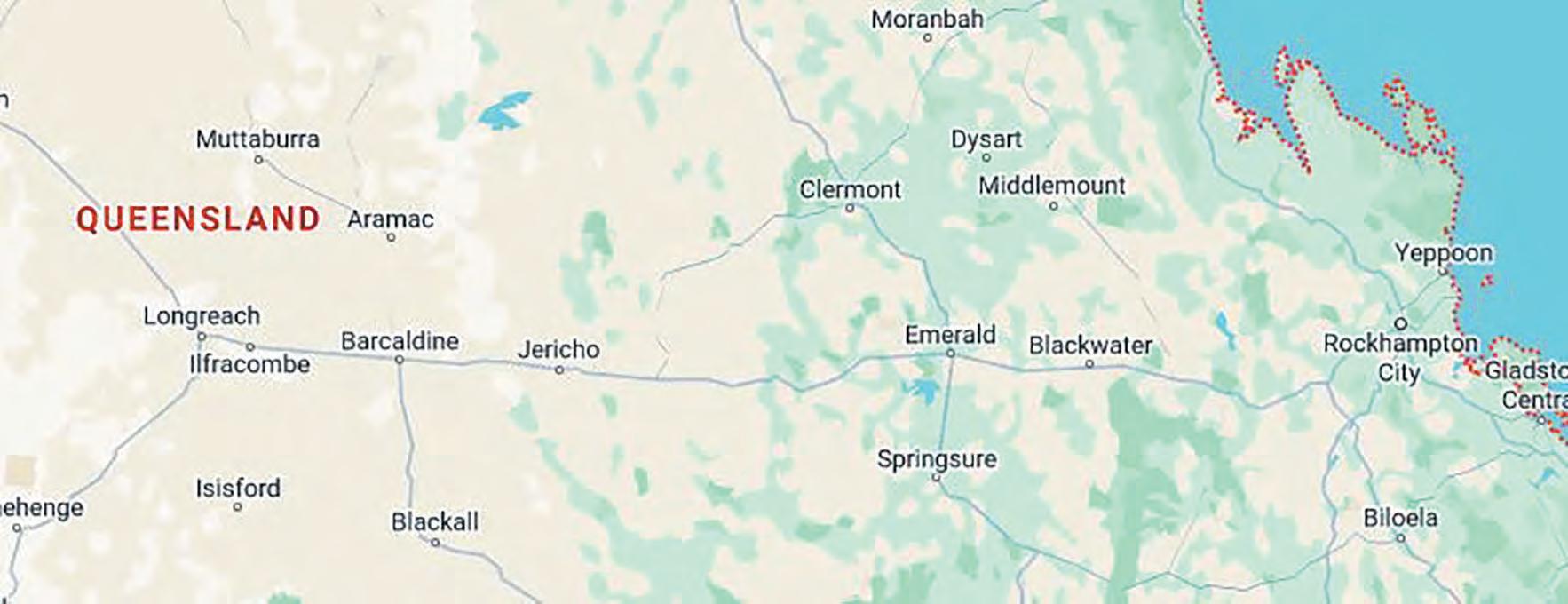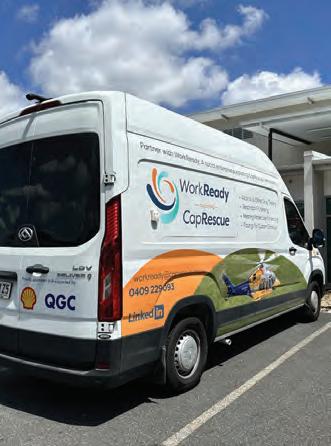


Make the Smart Move page 2 Exhibition celebrates CQ’s role in energy transformation pages 6-7 QRC congratulates new Premier page 9




Make the Smart Move page 2 Exhibition celebrates CQ’s role in energy transformation pages 6-7 QRC congratulates new Premier page 9
By Di Stanley
From Melbourne to Sydney and Brisbane, Townsville and the Gold Coast, east coast eyes are being drawn to the Central Highlands Development Corporation’s Make The Smart Move campaign.
CHDC Regional Development Coordinator
Deborah Barnes said metrics from five weeks into the eight-week social media and print campaign showed there was strong interest in the job vacancies, affordability and lifestyle on offer in the Central Highlands.
“We are getting strong interest from the major capital cities, which is great,” Ms Barnes said.
“And the engagement is good... it shows they’re returning back or staying on there for longer than a period of 30 minutes.
“There’s interest across the board, including in Emerald itself.
“It’s great to have all these solid metrics, and it’s great to see that generally there is success in that we do have interested people looking to move into the region, and clearly they want to know what is going on here.
“The real challenge for us is to continue that engagement and sell those working and lifestyle conditions that people clearly like.”
General awareness advertising began on 3 October progressively moving through the career-building local opportunities in the fields of childcare, construction, education, allied health, mining, government and health.
Ms Barnes said the Mark The Smart Move talent attraction campaign was a first for the region.
“Gladstone has Glad You Made It that they use across liveability, they use across jobs, and this is the first time the Central Highlands has created a proposition in Make The Smart Move, which is dual purpose for people who do work

in the region and for people that we want to recruit into region,” she said.
“It’s important that we have a proposition because it’s essential to connect with candi-
dates - a clear proposition is compelling and it serves as driver for candidates.
“It’s the ability for us across the eight weeks to keep utilising the strong proposition moving
forward, not just for CHDC, but for the ability of our stakeholders to engage in the campaign which is why we have been so stakeholderdriven in terms of engagement from the beginning with our focus group, our surveys.
“The proposition wasn’t just pulled out of nowhere, it comes from solid research and I think that there’s real opportunity across industry for it to be utilised.”
Ms Barnes the creation of the Smart Move employer portal was for all Central Highlands businesses to access the assets built across the employment categories for use on social media and websites.
Ms Barnes said a number of key employers in the region had already come on board.
“It means we can have a broader reach if we’re all singing the same message,” Ms Barnes said.
“When local business, including council or local bakeries that struggle, when they’re looking at their marketing for recruitment, they need to think broader in terms of pushing the narrative around what is going to sell the region.
“The research came out clearly that the region has some of the best working conditions and I think people need to understand even if someone’s leaving one business in the Central Highlands to go another, it’s not a loss for the region.
“What we don’t want to do is lose them externally.”
Ms Barnes said she believed the Make The Smart Move campaign could be around for years to come as an evolving platform constantly creating new stories to be shared.
“Really, we need our local stakeholders to be engaged with this because if it going to be a benefit to the region, to regional business and regional industries,” she said.
“We can’t work in isolation here.”
Clarke Creek Wind Farm marked a significant milestone last week with the first energisation of the wind farm’s main substation and testing taking place onsite.
Project director John Macchiusi called this a crucial step for the project, located 50km north-west of Rockhampton.
“It ensures that our wind turbines and associated electrical systems are ready for safe and reliable operation,” he said. This process includes:
• Testing and commissioning to ensure all electrical components, such as transformers, cables, and switchgear, are working correctly.
• Safety checks to verify that all safety protocols are in place and functioning to protect both the equipment and personnel.
• Power flow testing to allow electricity to flow through the system for the first time, which
Telephone: 07 4863 5050
Address: 5-9 Hempenstall Street, Kawana, QLD 4701
EDITORIAL
Breanna Lloyd Journalist
E: breanna.lloyd@CQToday.com.au
Matthew Pearce Journalist
E: matthew.pearce@CQToday.com.au
ADVERTISING
Cheryl Altouvas Advertising Sales
E: cheryl.altouvas@GladstoneToday.com.au
Lacy McDonald-Hearn
Advertising Sales Executive
E: lacy.mcdonaldhearn@CQToday.com.au
Lou De Jager
Advertising Sales Executive
E: lou.dejager@CQToday.com.au
is essential for the wind turbines to start generating power.
Mr Macchiusi said this work is vital to ensure a smooth transition to energy production as Squadron Energy powers toward full operational status for the 450MW wind farm.
A Squadron Energy spokesperson said all major work activities are currently underway onsite and it is expected that Clarke Creek Stage One will progressively connect to the grid starting from late this year.
Once operational, Clarke Creek Wind Farm will produce enough electricity to power around 330,000 Queensland homes and avoid 738,000 tonnes of carbon emissions annually.
Clarke Creek Wind Farm will progressively connect to the grid starting from late this year.
(Squadron Energy)
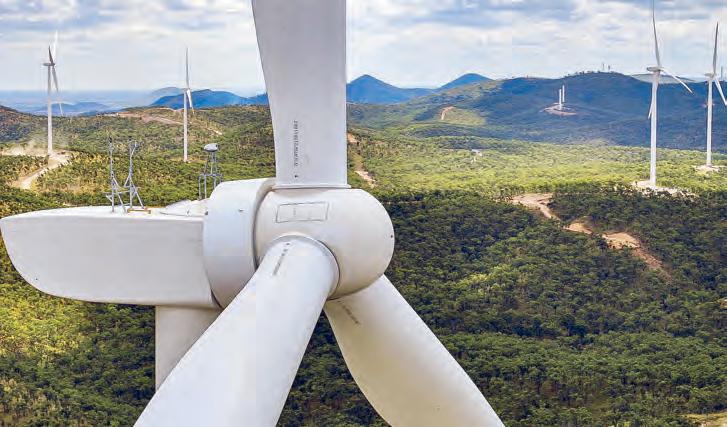
A rise in building approvals across most of the state has led the housing industry to urge the new Queensland Government to back it by eliminating unnecessary regulations hindering new construction.
While Queensland remains some way off its annual National Housing Accord target of 49,000 homes, with 35,169 new dwellings approved in the preceding 12 months, the Australian Bureau of Statistics (ABS) figures report a strong showing overall.
Central Queensland was the clear leader with a 54.9 per cent increase over the threemonth period, followed by Mackay & Whitsunday (+32.2 per cent). Wide Bay Burnett (+18.9 per cent), and Far North Queensland (+12.1 per cent) also posted positive results.
A 19.4 per cent decline in Downs & Western was attributed to a drop in unit approv-
als, while those for detached housing remain strong. The -30.4 per cent decline for North Queensland accounted for a dip in both detached houses and units but remains strong over the 12 months at +19.5 per cent.
After the new government declared they are ‘laser-focused on delivering housing supply,’ with ‘a place to call home’ among their key commitments, Master Builders chief executive officer Paul Bidwell said industry has an action plan to drive the state forward.
“Red tape is slowing down building, pushing up costs, and stifling productivity,” Mr Bidwell said.
“It’s all well and good to welcome an increase in new dwelling approvals, but it will mean nothing if regulation stops us getting these buildings off the ground.
“This includes halting the expansion of the
project trust account regime to smaller private projects. We need to stop the planned rollout to those of $3m value in March and $1m in October, to avoid the possibility of businesses going to the wall.
“The Best Practice Industry Conditions (BPIC) need to be stripped from new government tenders immediately. Put simply, government can’t deliver projects on time and on budget as long as BPIC applies in its current form.
“Swift action is also needed on the changes to the National Construction Code (NCC) 2022 that we know are pushing up costs and causing technical problems. The review already underway on this must be comprehensive and completed urgently – and we have a list of 10 essential changes based on feedback from builders working to the new rules.”
By Gregor Mactaggart
Premier David Crisafulli has called on two regional Queenslanders to focus on the important resources’ portfolio.
Burdekin MP Dale Last was appointed as Natural Resources and Mines Minister, as well as Regional and Rural Development Minister and Manufacturing Minister.
He is a member of a cabinet Mr Crisafulli expects will deliver a fresh star for Queensland.
“This team of 19 Ministers and the Leader of the House are the ones who have diligently and relentlessly exposed why our state needs a fresh start, over the past four years,” he said.
Mr Last will be supported by Callide MP Bryson Head, who was named Assistant Minister for Regional Development, Resources and Critical Minerals.
“I’m looking forward to working with the minister (Mr Last) to unlock the true economic potential of Queensland’s resources sector,” Mr Head said.
“With this representation, we are truly bringing the voice from the bush to Brisbane, which is a positive for our decentralised state.
“Premier Crisafulli’s appointments provide a platform to implement policies that truly reflect the needs of rural and regional Queensland.”
Mr Head, a qualified geologist, brings real world mining sector experience to the role.
“Being from a small rural community and having worked in Queensland’s coal mines to now be able to serve as the Assistant Minister for Regional Development, Resources and Critical Minerals under the Crisafulli Government is an absolute honour,” Mr Head said.
“Working in the resources sector personally, in different states and abroad has given me a unique insight into the challenges and opportunities posed, and I now hope to use this experience to continue to improve the economic and safety outcomes of the sector.
“Serving on the Transport and Resources Committee in the previous term of government has also provided me with valuable insights to many other challenges of Regional Queensland.”
The Queensland Resources Council welcomed Mr Last’s appointment to Cabinet, saying he is responsible for the Sunshine State’s most important industry.
“The QRC looks forward to working constructively with Minister Last, whose own electorate includes one of Queensland’s major resources regions,” QRC chief executive officer Janette Hewson said.
“There are significant opportunities for Queensland’s world-leading resources sector to continue underpinning our state’s economic prosperity with the right government policy settings that attract investment in new projects.”











































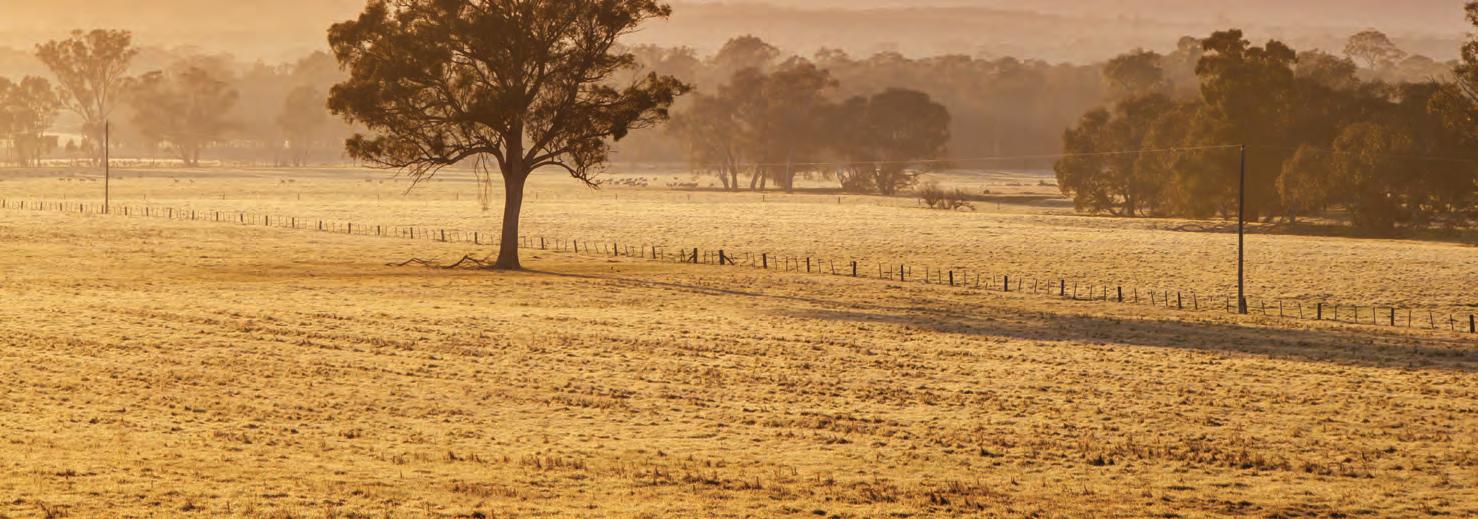

















By Matthew Pearce
With the Callide Power Station selected as a possible location for a nuclear power station should the LNP win power, Biloela was first on the list for the House Select Committee on Nuclear Energy’s regional visits.
A public hearing was held on Wednesday, 13 November at the Biloela RSL with locals invited to attend to share their views.
Speaking on the day, landholder Therese Creed said, for the past six years, she had opposed a solar plant on three sides of her property, “on very high quality food producing land”
“If we aim to reach zero emissions, renewables is definitely not the answer, there is so much data to prove that now and so many failures in other countries,” she said.
“I feel like the only logical option if we’re heading to net zero is nuclear, which is proven to be so efficient and so clean that countries that went nuclear are selling energy to countries that went renewable.”
Federal Member for Flynn Colin Boyce said it was important for Nuclear Committee members to hear from the community of Biloela about any energy issues that they have been facing.
“With the CS Energy Power Station scheduled for closure in 2028, and the impact of transmission lines, wind turbines and solar panels on their agricultural land, people are looking for security and are willing to consider nuclear to meet their energy needs,” Mr Boyce said.
“Businesses in Biloela can see the impact that the closure will have. The loss of over 260 workers will be felt across the town, in the schools, the shops, sporting clubs and the community organisations that support these families.”
Speaking at the inquiry, Banana Shire Mayor Nev Ferrier said he had not been aware of the LNP’s proposal to build a nuclear reactor on the site of the Callide Power Station prior to the announcement on 19 June, but had talked with LNP representatives since then.
He said he expected it would be at least six years before any movement was made.
“They (the LNP) have got to win the next election, then they’ve got to win the one after that to get control of the senate so it’s no good yapping about what’s going to happen now because it’s in the future,” he said.
Committee chair and Hunter MP Dan Repacholi said he wanted to make sure “the regions that have powered our country for generations” are getting a fair deal when it comes to the energy transformation.
“Peter Dutton and his Coalition colleagues are imposing nuclear plants on seven regional communities, including Central Queensland, but we don’t know any more,” he said.
“In the absence of Dutton details, it’s time to hear directly from community leaders.
“Can nuclear keep the lights on and play a role in our energy system to 2050?

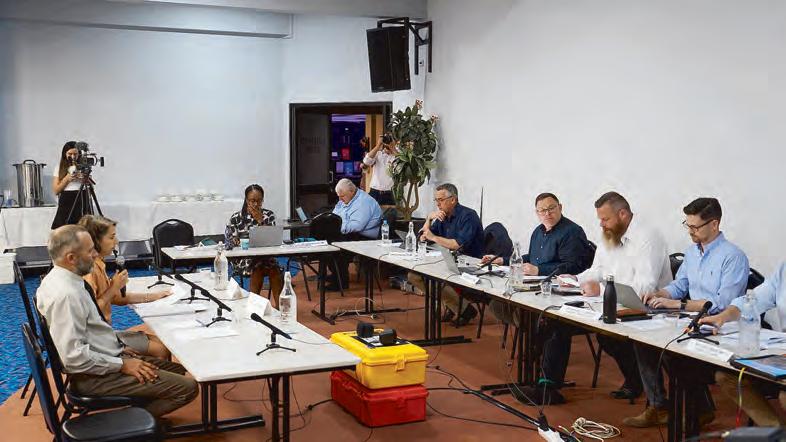
“Why would we ignore our natural advantages like solar and wind, when reliable renewables are driving prices down and securing Australia’s energy future?
“Can an Australian nuclear power industry be operational in time for inevitable coal fired power closures? And if not, what will happen to workers and communities in the meantime?”
On the other side of the fence, Shadow Minister for Climate Change and Energy Ted O’Brien said nuclear was “probably the biggest
single lick of investment” that would ever come to the Biloela community.
“This public hearing is a great opportunity for Labor Party members of the parliamentary committee to see what’s on offer in these communities and ask themselves if they really want to deny this community the opportunity for jobs and economic security into the future,” he said.
He said this was “just the beginning” of discussions with the local community, with the
LNP planning a two-and-a-half year community engagement process.
Mr O’Brien arrived in town early on Tuesday to chat with locals and tour Callide Power Station, prior to the public hearing on Wednesday.
“People have just been great, and so prepared to engage openly, I think that’s really encouraging,” he said.
He said lessons learnt from overseas showed regional communities would be the “biggest winners of the lot” , especially with the LNP looking at establishing Integrated Economic Development Zones.
“People are very interested in a large multibillion facility that will last 80 to 100 years, that will guarantee jobs and economic growth locally, but they’re particularly interested in how this will unlock investment for infrastructure, public services and the community,” he said.
“The question becomes for the local community, how do they want to use the cleanest, cheapest most consistent energy in the country to attract investment, whether it be manufacturing for value added processing and the like?
“The more we have conversations with the local community about what this means, the more people get engaged knowing that this is about them having an opportunity to really shape their own future.”
The Biloela event was followed by public hearings at Nanango on Thursday, 14 November and Brisbane on Friday, 15 November. The closing date for submissions to the House Select Committee was Friday, 15 November.



By Di Stanley Investors
in Kestrel coal mine, north of Emerald, have put their majority stake in the operation on the market with an expected price tag of $3 billion.
Private equity firm EMR Capital announced plans to sell the coking coal mine in October before announcing the engagement of Macquarie and Bank of America to run the sale process.
EMR Capital, with offices in Melbourne, Hong Kong and the Cayman Islands, and Indonesia’s Adaro Energy, purchased an 80 per cent stake in Kestrel for $2.25b in August, 2018.
Japanese trading house Mitsui owns the remaining 20 per cent of the mine, which is one of the Central Highlands’ biggest employers with more than 600 workers onsite.
Mitsui has yet to comment on the proposed sale.
“We are big believers in steel and a big believer that met coal will still be required for making steel for a few decades to come,” EMR Capital chief executive officer Jason Chang told Reuters.
“If you look at the number of large-scale met coal assets that have a history of sustainable production, there really aren’t that many so I think it’s fair to say that Kestrel is one of the last ones that will be transacted for a period of time.”
Around $500 million has been spent on the mine which is ramping up to produce eight million tonnes of coking coal a year, Mr Chang said.
“The region is very rich in high quality, prime low vol coal around Kestrel so there is a lot of upside for Kestrel to potentially collaborate with its neighbours to increase production further,” he said.
In 2022, Kestrel Coal advertised the sale of up to 143 employee-occupied properties in Emerald, a mix or houses and unit blocks, covering a combined 6.7 hectares of the township.
The properties were offered with a sevenyear leaseback to Kestrel Coal, generating $1.7m in annual passive income.
Industry insiders believed the deal could have fetched around $25 million, but the portfolio was quietly removed from the marketplace.
“A numbers of offers were submitted to Kestrel for their consideration,” Knight Frank Rockhampton’s Adam Kelly said.
Mr Chang said Kestrel Coal Resources’ net debt stands at $270 million.
Central Highlands Regional Council Mayor Janice Moriarty said the council had not been informed of the upcoming sale, and she awaited the outcome.
“Council has not been told of EMR Capital divesting its interest in the Kestrel coal mine,” Cr Moriarty said.
“Kestrel mine is a significant employer in Emerald and its ongoing operation is important to our local economy and our local com-
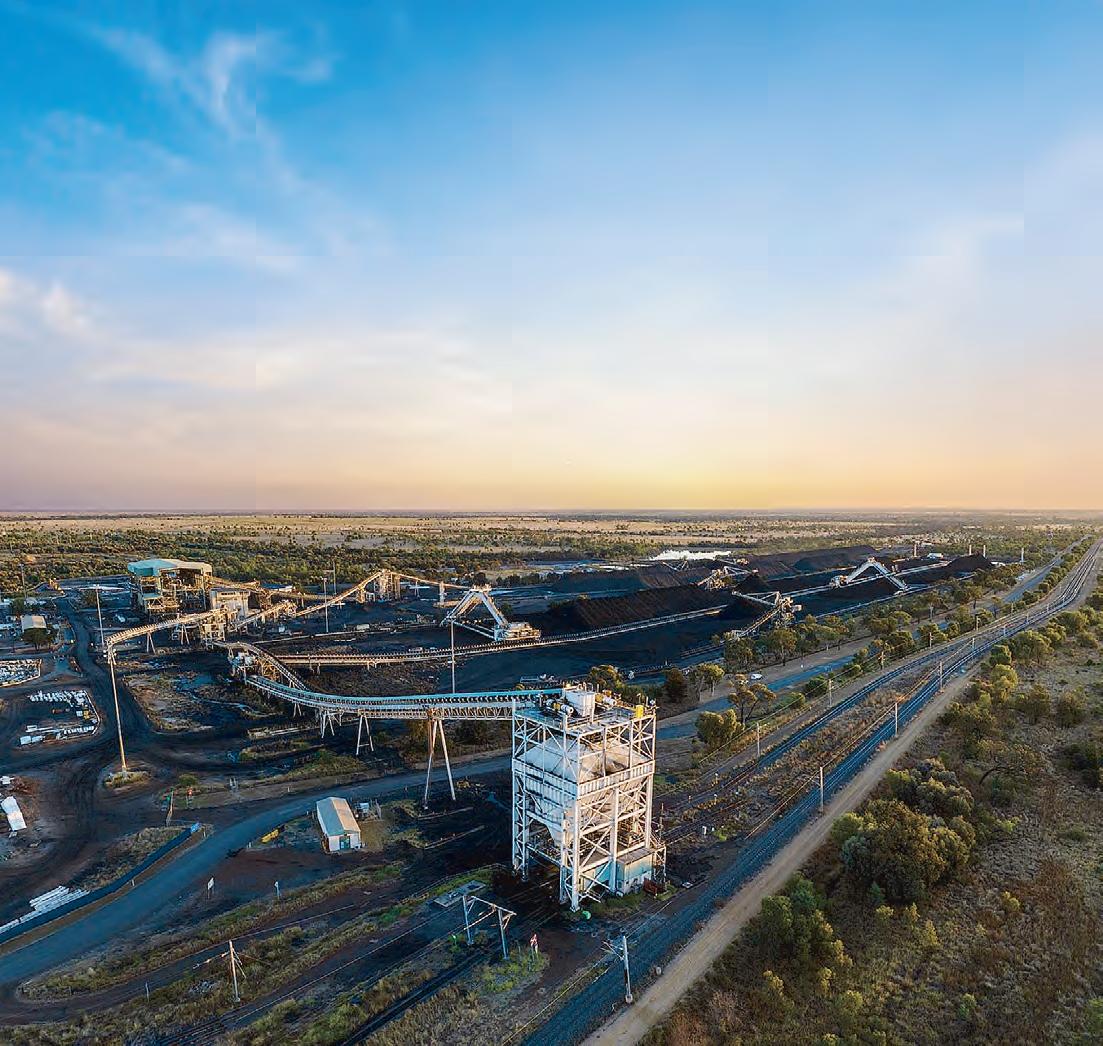
munity through its contributions of local clubs and organisations.
“Myself and the community will be watching this space with great interest.”
Earlier this year, Kestrel Coal became the second partner in the former Queensland Government’s $520m Low Emissions Investment Partnerships with a new gas-to-electricity power project aiming to reduce the mine’s emissions by more than one million tonnes of carbon dioxide over eight years.
The project will focus on expanding Kestrel Coal’s underground mine’s drainage system to capture more fugitive gas, preventing it from
being released into the atmosphere.
A 30MW power station will be built on-site with the capability to generate enough electricity to power more than 40,000 homes, and creating 160 additional jobs ahead of full operations in 2026.
Kestrel is working through the approvals process to develop the Kestrel West Mine Extension Project which would be an extension and continuation of its existing underground coal mine to extend the mine life through to 2050.
The proposed project area comprises approximately 5644 hectares within an existing
mineral development licence and existing approved mining leases.
With Kestrel West operational, the mine would produce between 7 and 8.6 Mtpa of primarily metallurgical coal product for export markets.
Anglo American is also selling steelmaking coal assets in the Bowen Basin and expects to receive binding offers by mid-November.
Yancoal Australia, which operates the Yarrabee coal mine near Blackwater and has a 50 per cent stake in the nearby Middlemount mine, has been named as a potential suitor.
A new photography exhibition titled ‘The people and places powering Australia’s future’ is on now at the Gladstone City Library.
On display until Saturday, 30 November, the exhibition features images of the people and organisations across Central Queensland that are leading the energy transformation, as well as the landscapes it is taking place on.
Professional photographer Katherine Griffiths was commissioned by the Australian Government’s Net Zero Economy Agency as part of its Bringing new energy to Australia campaign.
The images showcase the exciting work taking place across the region, including ACCIONA Energía’s Aldoga solar farm, Stanwell Power Station’s transition to a Clean Energy Hub and the academics leading critical research at CQUniversity, Gladstone.
“Central Queensland has always played an important role in powering Australia. This exhibition showcases the unique landscapes, infrastructure and individuals that are at the forefront of the country’s energy transformation,” Net Zero Economy Agency acting chief executive officer Trevor Power said.
“From local government and academics to groundbreaking startups and established industrial leaders, these images bring the shift to renewables to life.”
Ms Griffiths said the exhibition was one of her most significant works.
“Artists often hope to create change through our work, but it’s quite rare to see tangible results,” she said.
“My passion for portraiture comes from connecting with people, hearing their stories, and understanding their perspectives.
“The pride, resilience, and hope I discovered while capturing these individuals is something I truly hope resonates with everyone who sees the exhibition.
“Contributing to a movement focused on shaping a sustainable future for generations to come makes this work especially meaningful.”
The Net Zero Economy Agency is responsible for promoting orderly and positive economic transformation to ensure Australia, its regions and workers realise and share the benefits of a net zero economy.
Broader campaign activities in the region will run until the end of November and include an interactive information hub at City Centre Plaza in Rockhampton as well as mobile hubs at events including Central Highlands Development Corporation’s AGTECH24.
To find out how Central Queensland is powering the energy transformation, visit futuremadeinaustralia.gov.au.
EXHIBITION DETAILS
• Dates: From now until Saturday, November 30, 2024
• Opening times: Monday-Saturday, 9am to 5.45pm (9am-4pm Saturday)
• Location: Gladstone City Library, 39 Goondoon St, Gladstone Central
• Entry: Free


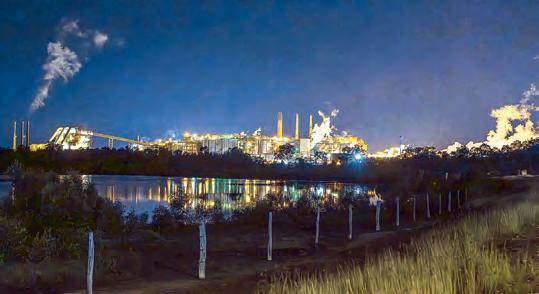

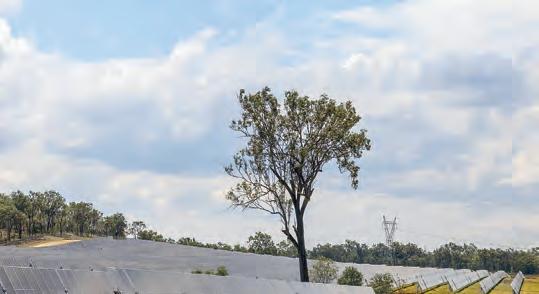
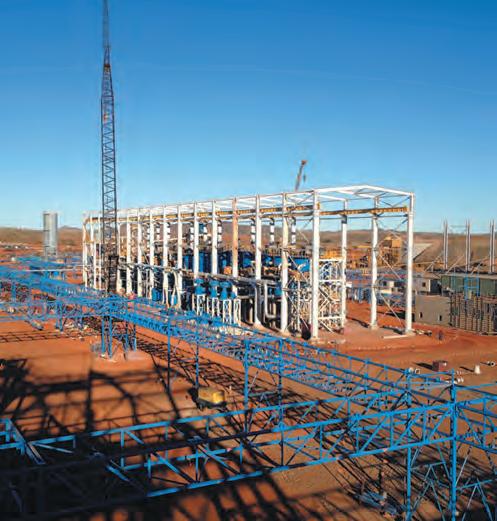

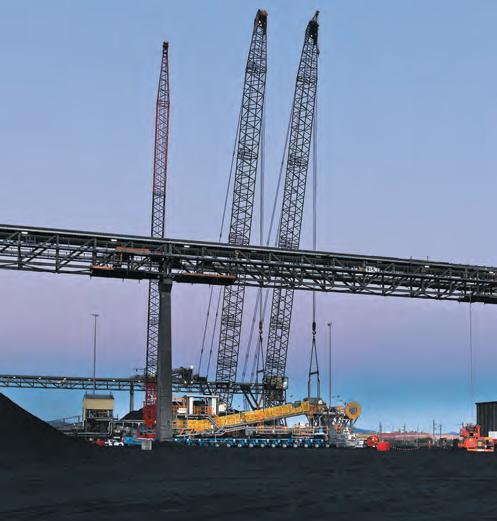
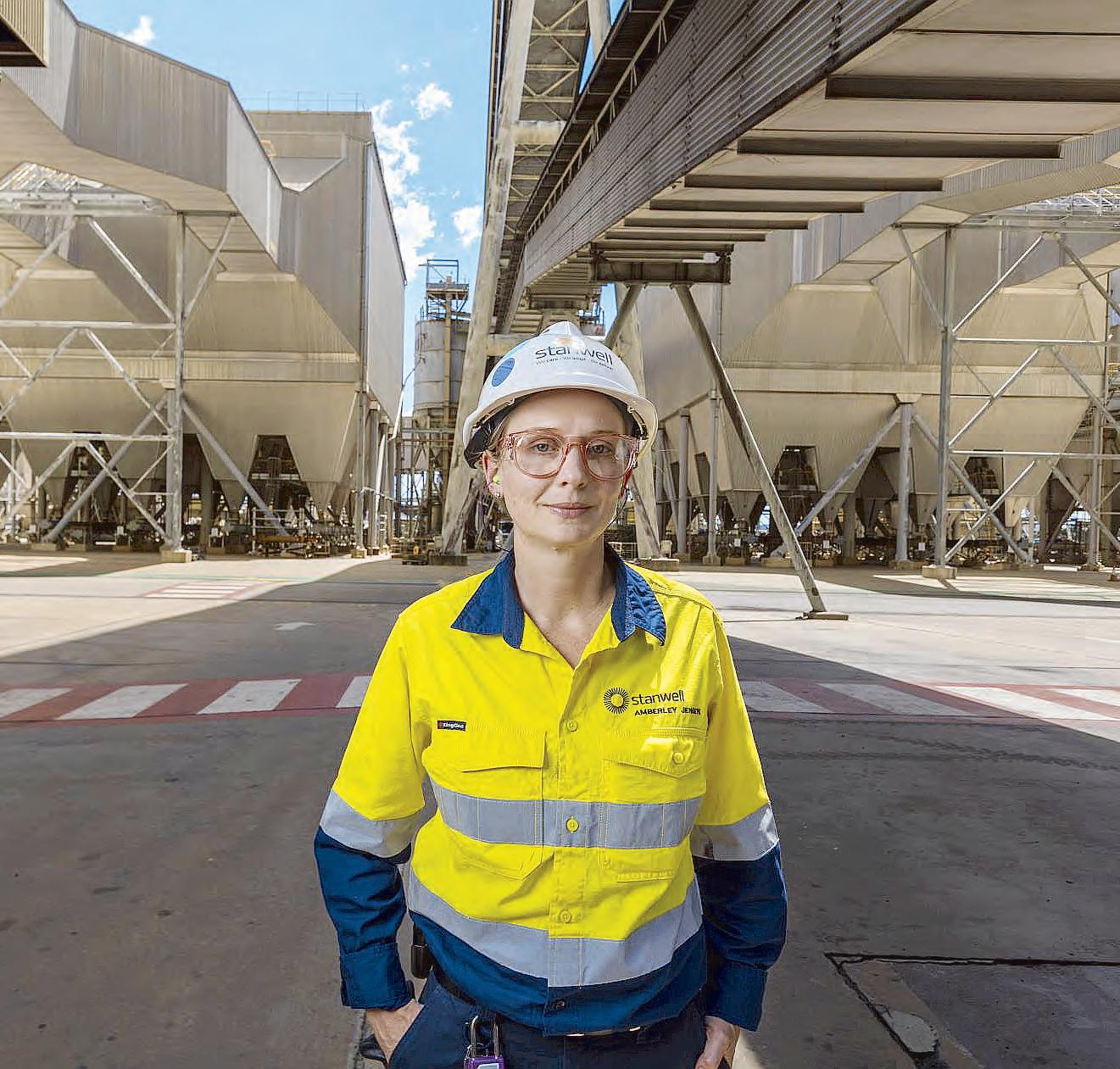
THE STORIES BEHIND THESE EIGHT
KATHERINE’S PHOTOS
ALDOGA SOLAR FARM
The expanse of solar panels at Aldoga Solar Farm reflects the region’s shift toward renewable energy.
Operated by Acciona Energia, this largescale solar farm harnesses the power of the sun to provide sustainable electricity for Central Queensland - reducing carbon emissions and paving the way for a cleaner future.
AMBERLEY JENSEN, POWER SYSTEMS
SUPERINTENDENT AT STANWELL POWER STATION
Amberley has been with Stanwell Power Station for 15 years. From Maintenance Scheduler to Superintendent, she has experienced the growth and transformation of the energy industry firsthand.
Her extensive experience gives her a unique perspective on the challenges and opportunities within the industry.
“Change is exciting, and new technologies bring learning opportunities. I’m proud to be part of shaping the future while supporting
local job opportunities. It’s important for me, especially as a mother, to ensure the next generation has access to safe, reliable industries close to home,” she said.
PORT OF GLADSTONE
The vibrant scene at the Port of Gladstone captures a bustling hub of activity, with a fleet of boats docked and ready for action.
The port is a critical nexus for both traditional industries and emerging renewable energy projects, supporting local and national economies.
The image reflects the region’s adaptability and ambition as it navigates the move to a future of more sustainable energy while continuing to honour its rich maritime heritage.
CASSIDY GEE KEE, ALPHA HPA PROCESS OPERATOR (front page photo)
Cassidy is captured inside the Alpha HPA facility, where cutting-edge technology is shaping the future of high purity alumina production.
As a process operator, Cassidy’s role within this innovative environment highlights the significance of Central Queensland in ad-
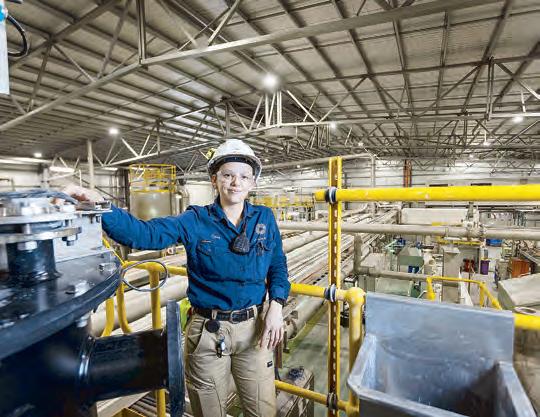
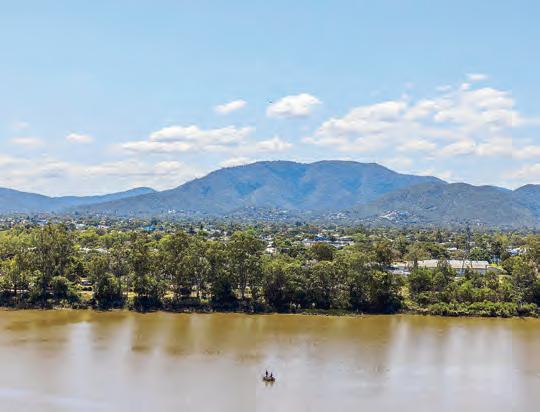
vancing clean energy solutions and sustainable manufacturing practices that are critical to Australia’s energy transformation.
DR CAL DEVNEY, SENIOR RESEARCH MANAGER AND PROJECT MANAGER, HYDROGEN COMMUNITY HUB, CENTRAL QUEENSLAND UNIVERSITY
Dr Devney is dedicated to advancing the role of hydrogen energy in the broader energy landscape.
Her work involves fostering community engagement, education and building knowledge around the benefits of hydrogen technology in creating a cleaner, more sustainable future.
“The move towards a sustainable future is crucial, not just for ourselves, but for future generations. My goal is to support the community by providing people with the knowledge to be able to actively participate in this transformation and help shape a more sustainable world,” she said.
FITZROY RIVER, ROCKHAMPTON
A peaceful scene unfolds in Rockhampton, with a small fishing boat drifting along the Fitzroy River and the vast landscape stretch-
ing into the distance.
Capturing the natural beauty and quiet resilience of the region, the river plays a vital role in connecting the community to its surrounding environment.
NIGHT LIGHTS ON QUEENSLAND ALUMINA LTD SMELTER
The illuminated Queensland Alumina Ltd smelter stands out against the night sky in Gladstone, a symbol of the region’s pivotal role in the alumina and aluminium industries.
This facility operates around the clock, contributing to the local economy and symbolising the region’s industrial heritage.
THE TRAIN ROLLS ON
The Rockhampton train, a symbol of the region’s rich transportation and industrial history, connects Central Queensland’s industries and communities.
The train continues to be an important part of the region’s infrastructure, with the potential to support new developments in clean energy, such as solar, wind and hydrogen projects, contributing to Queensland’s future.




The news of a coal miner’s death sends shockwaves throughout the industry, across every mining community and to the heart of every worker and mining family.
There is a collective grief that time never heals.
Just before sunset on Friday, 8 November 2024, in the heart of Moranbah, families, friends, and colleagues gathered at the Miners’ Memorial. Together, they paused to honor the coal miners who left for work and never returned, a solemn tribute to those whose lives were dedicated to the industry and the community.
Isaac Regional Council Mayor Kelly Vea Vea reflected on the poignant nature of the gathering, recognising the realities faced by those in the mining sector.
“For many in mining, the simple act of saying goodbye at the start of each shift holds immense meaning,” Cr Vea Vea said.
“When they step out the door, there’s a quiet, constant hope that they’ll come back home, unharmed. But here in Moranbah, fifteen of those farewells became final goodbyes.”
The remembrance lamps were once again illuminated at Moranbah Town Square, honouring the lives lost in Moranbah mines.
This commemoration also paid respect to those lost in transit to and from work, in camps, and from coal-related illnesses.
Moranbah Miners’ Memorial Committee president Scott Leggett emphasised that the annual ceremony was more than just a remembrance service.
“Every year, this event becomes more meaningful, offering families, friends, and coworkers a chance to come together and find support in shared memories,” Mr Leggett said.

“We couldn’t hold such a meaningful event without the hard work and dedication of our organisers, committee members, and volunteers.
•
•
“Their commitment and countless hours ensure that we’re able to come together each year to honor our miners with the respect and dignity they deserve. We’re truly grateful for their efforts in bringing the event to life.”

The committee collaborated with 4RFM to bring the Miners’ Memorial Art Project to life, featuring striking 12-foot images of miners holding lamps, created by artist Desma Munroe. These powerful images were complemented by heartfelt tributes crafted by local school students, who contributed their own artwork after
learning about the significance of the memorial. Community groups and volunteers dedicated their time and effort, filling sandbags and arranging lanterns to complete the installation.
More than 4000 people participated in the 2024 Moranbah Miners’ Memorial ceremony, either in person or online.
By Poppy Johnston, AAP
Australia’s annual pace of wage growth has stepped down to 3.5 per cent through to September, from 4.1 per cent over the year to June. A large fall in the annual rate was anticipated as a bumper 5.75 per cent increase in award wages fell out of the calculation.
On a quarterly basis, the 0.8 per cent wage growth captured by the Australian Bureau of Statistics held at the same pace as in the quarter before and landed a touch below expectations. While unchanged from the quarter before, the 0.8 per cent quarterly growth is down from the peak of 1.3 per cent recorded in the September quarter last year.
Australian Bureau of Statistics head of prices statistics Michelle Marquardt said wage rises for many jobs could be directly or indirectly linked to the outcome of the an-
nual wage decision by the industrial umpire.
“The latest decision of a 3.75 per cent wage increase paid from 1 July 2024 was lower than the September quarter 2023 increase of 5.75 per cent,” she said. “It was also lower than the commission’s September quarter 2022 awarded increase of between 4.6 per cent and 5.2 per cent.” Annual private sector wages grew by 3.5 per cent in the September quarter and public sector wages rose 3.7 per cent.
Pay packets have been expanding strongly as demand for workers remains high but slower growth is expected as the economy weakens and the labour market slackens.
Some economists are wary persistently strong wage growth without accompanying productivity gains can add to inflation pressures and complicate the Reserve Bank of Australia’s inflation fight.
The Queensland Resources Council (QRC) has congratulated David Crisafulli and the Liberal National Party following their Queensland state election victory.
QRC chief executive officer Janette Hewson said the organisation was looking forward to a constructive and positive relationship with Mr Crisafulli and the LNP Government.
“Mr Crisafulli and the LNP have been endorsed by the people of Queensland with the honour of leading our great State,” Ms Hewson said.
“QRC welcomes Mr Crisafulli’s comments to establish our state’s future as a powerhouse of the Australian economy.
“The resources sector plays a key role in the long-term vision and QRC is encouraged by the incoming Premier’s commitment to attract new investment in Queensland’s key industries, including resources.”
The QRC said ahead of the state election, it had engaged all sides of politics in a bid to achieve best outcomes for industry, and for Queenslanders.
“We welcomed the LNP’s commitments to establish a Resources Cabinet Sub-Committee to improve consultation across Government on policies that encourage investment in the resources sector,” Ms Hewson said.
“The Resources Subcommittee and the reestablishment of the Productivity Commission are important steps by the incoming government that will get our sector back on the state agenda and deliver better outcomes for Queensland.”
“The QRC also welcomes LNP’s commitment to ensure reliable electricity supply to Queensland through the energy transition, $2 million in funding to our educational arm the QMEA to boost regional skills training, and $500,000 to attract more women to the resources sector workforce.
Ms Hewson said the comments on election night and LNP commitments were a good start to a more collaborative and cooperative relationship between the new government and Queensland’s most important industry.
“The resources sector contributed $117 billion to the state’s economy and supported more than 530,000 jobs last year but its continued success requires the right government policy settings to re-position Queensland as a reliable place to invest,” Ms Hewson said.
“That includes a fair and balanced royalty system that encourages investment and streamlining approvals for new projects across all commodities, including critical minerals.
“Regional Queenslanders, who strongly backed a change in government, deserve a fairer share of the benefits they generate for our state through the resources sector with better infrastructure and roads, and improved services like health.
“Queensland has abundant reserves of the commodities the world needs including coal, gas, metals and critical minerals, and with the
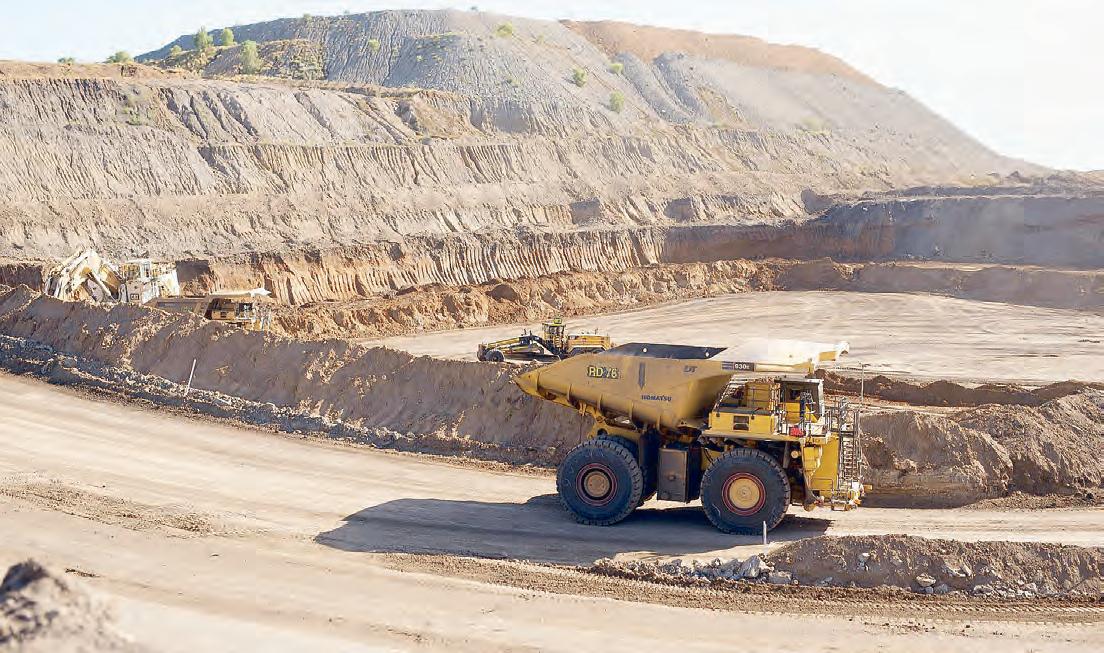
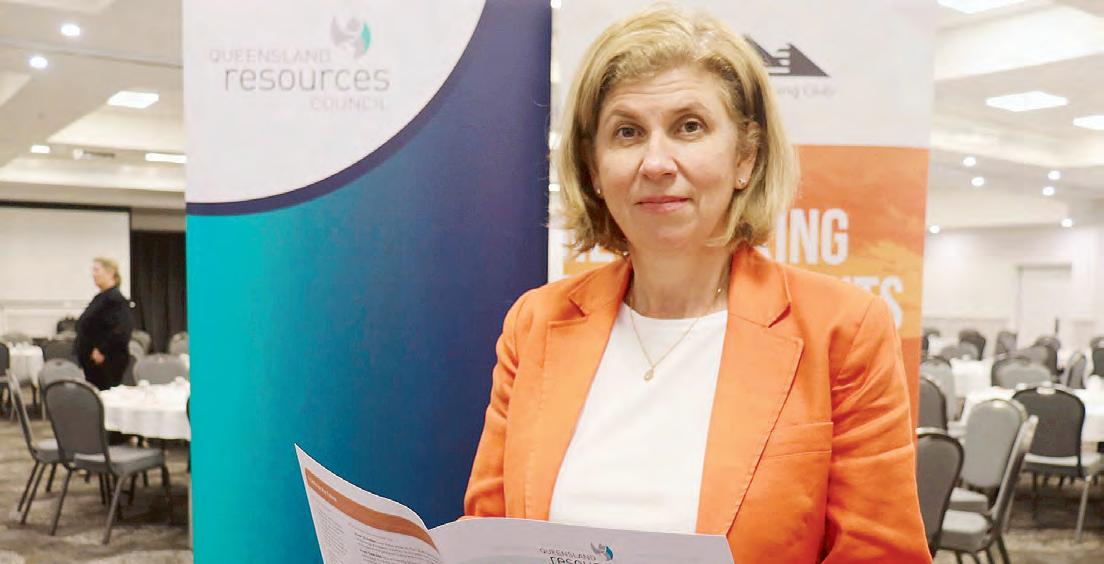
to a global powerhouse for responsible resources.”
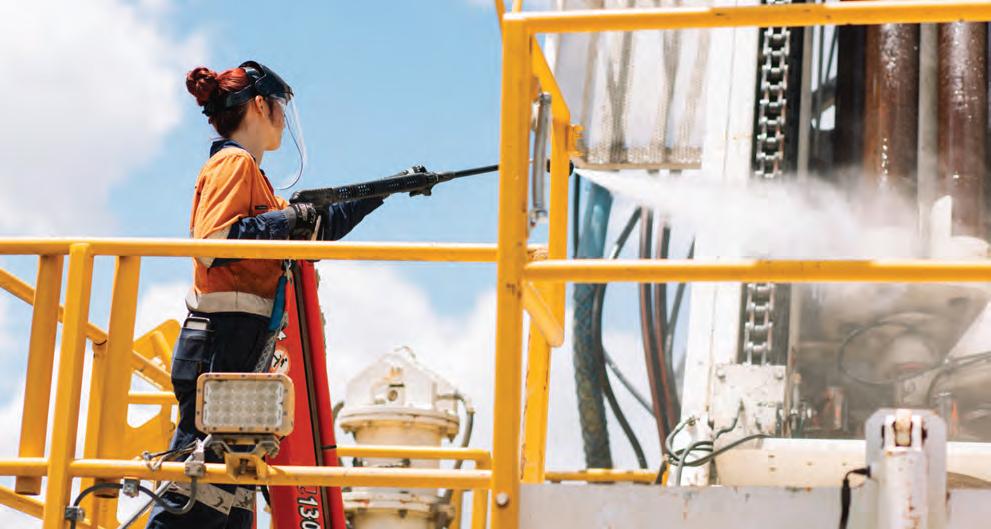
Commercial producers from throughout Queensland underpinned the strong demand for quality grey and red genetics at the fifth annual Great Northern Brahman Sale on 24-25 October with heifers topping at $26,000 and bulls at $34,000.
A premiere fixture on the northern sale calendar, the two-day event was held in The Whitsundays and resulted in a 100 per cent clearance of 82 bulls with an overall gross of $981,500.
The multivendor event kicked off on the Thursday at Airlie Beach Hotel with the live and online heifer and genetics sale. All nine heifers sold to average $15,222 and grossed $136,998 while the semen packages averaged $725 per straw and grossed $14,500.
Interfaced with Stocklive, the live auction on the Friday at the Proserpine Showgrounds resulted in a 100 per cent clearance of 82 grey and red bulls to a top of $34,000 and average of $7378 while 43 from 51 heifers were sold under the hammer for an average of $4884 and 84 per cent clearance.
Robert and Mandy White, Wilangi Brahmans, Charters Towers, snapped up Lot 34, NCC AL 6244 (H) for the top price of $34,000 from vendors Vella Brahmans, Proserpine.
The 24-month-old son of NCC Eli and out of NCC Silhouette 4258, weighed 862kg, and had a raw eye muscle area of 144sqcm, scrotal circumference of 40cm, intramuscular fat scan of 5.5 per cent, rump and rib fat of 13 and 11mm, motility of 80 per cent and morphology of 83 per cent.
The young sire was sold as three-quarter share and full possession with semen retained for in-herd use only.
He was one of the last NCC Eli sons to be offered and impressed with his length, volume, temperament and structural soundness.
Lot 1, Cambil Polled Emperor 6527 (IVF) (PS), the 38-month-old son of Kenrol Darrocca 2761, opened the sale, boasting a thumping liveweight of 1005kg, scrotal circumference of 41.4cm, raw eye muscle scan of 151sqcm, 95 per cent motility and 80 per cent morphology.
The young sire was snapped up by Belfrost Grazing, Winton, for the second top price of $20,000 for vendor the Camm family, Cambil Brahmans, Mt Julian.
Emperor was sold for a three-quarter share and full possession with 100 straws of semen included and was full brother to the top price heifer sold the evening before.
Sired by Cambil Diango 6400, the grey bull Cambil Perkins 6910 (IVF) (PP), Lot 15, made $16,000 to Queensland Rural account LG Grazing.
The Blue Water Hills Cam son, Lot 5, NCC Bill 6098 (H), sold for the fourth top price of $15,000 to Emanuel Pace, Blue Water Hills Brahmans, Mackay, by vendor Vella Brahmans, Proserpine.

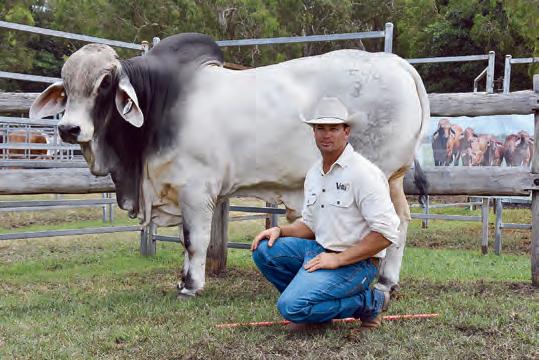
Geoff and Scott Angel, Glengarry Brahmans, Rockhampton, outlaid $15,000 for the 21-month-old grey bull, Lot 7, NCC Amos (IVF) (H) from vendor Vella Brahmans.
In the heifer and genetics sale on day one, Lot 1 Cambil Holly 6851 (IVF) (PP), a grey daughter of Kenrol Darrocca 2761, was sold under the hammer to Mitch and Tenille James, Boomerang Brahmans, Mt Julian, for the top price of $26,000.
The December 2022 drop heifer was PTIC to US sire Mr H Pride of Maddox 684 and sold by the Camm family, Cambil Brahmans.
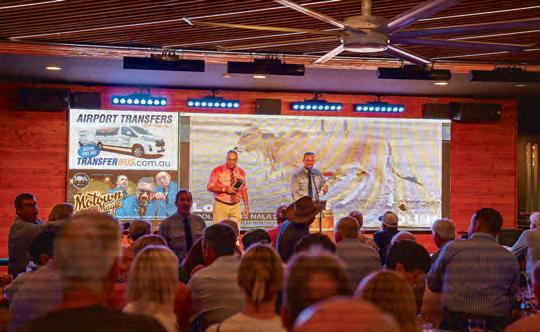
The second top price was $22,000 outlaid by the Pace family, Blue Water Hills E Brahman Stud, Mackay, for Lot 11 Badilla Sapphire (IVF), a May 2024 drop cherry red heifer by Kariboe Valley Ventura 1161/0 sold by Blake and Renee Chiesa, Badilla Brahmans, Ingham.
Great Northern Brahman Sale chairman James Kent said the sale drew both repeat and new buyers from across Queensland to compete on a catalogue of world class genetics.
Mr Kent said buyers came from the local Proserpine area as well as leading bullock producers from Clermont, Alpha, Charters Towers,
Georgetown, and Collinsville regions.
“Commercial buyers were chasing industry relevant bulls with strong carcase characteristics, and this was underpinned with a significant increase in demand for strong horned bulls,” he said.
Grant Daniel Long Rockhampton branch manager Joshua Heck said with the increased offering this year it was encouraging to see such a solid result through the entire sale.
Selling agents were GDL Rockhampton and Elders Rockhampton.
By Breanna Lloyd
This year’s Lancefield Brahmans Invitational Sale, held on Monday, 28 October at CQLX Saleyards, Gracemere, achieved a 100 per cent clearance rate and an overall record average.
Buyers from across the state attended the event and purchased all 96 grey bulls offered, with an average price of $11,635.42 and a gross of $1.1 million.
The top-priced bull, Elrose Gold Dust 22998, lot five, sold for $70,000, offered by Scott and Lizette McCamley, Lancefield S Stud, Dululu, and purchased by Everingham Pastoral, Oak Park Brahmans, Einasleigh.
By sire Elrose Blockbuster and dam Elrose Wendy, the 27-month-old bull weighed 800kg, with fat depth scans of nine and six millimetres for P8 and rib fat.
The second top-priced bull, 24-month-old 2AM Josiah 8726, by sire 2AM Jasper and dam 2AM Jay, was sold for $55,000 to the Sharpe
Stud, Mount Moore.
Hourn and Bishop Queensland agent Brad Passfield agreed with vendor Ross McCamley, Lancefield Brahmans, that it was another great sale.
“It really was a great sale again this year, especially with the gross and average totals,” Mr Passfield said.
“We had a lot of commercial support from the Northern Territory, strong stud competition, and many return buyers.
“It’s good to see those stand-out sires in the current marketplace as well.
“It’s a fantastic result for the McCamley family, and we are ready to do it all again next year.”
Mr McCamley thanked Mr Passfield and the entire Hourn and Bishop Queensland team for their support.
“The sale was a terrific success thanks to our agents, return buyers, and underbidders. We couldn’t have done it without you,” he said.
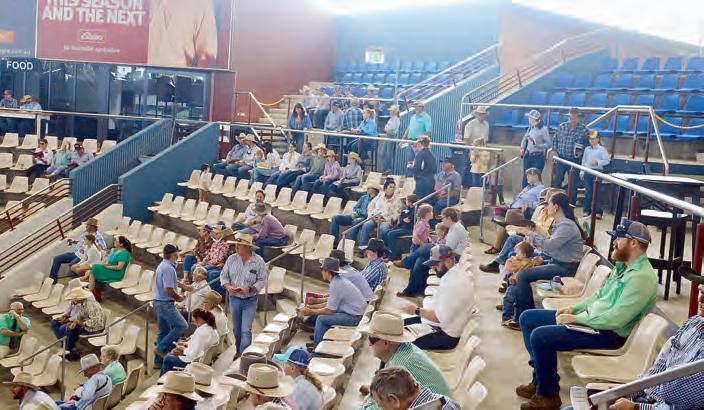
She’s only early into her career in agriculture, but already Emerald’s Tracy Hogan is inspiring future farmers.
Tracy, from the RDO Equipment John Deere dealership, was named Parts Apprentice of the Year at the fourth annual John Deere Technician of the Year Awards.
“I call them the ‘next generation of green’,” she said.
“I love seeing kids getting excited seeing a big John Deere header or a mower and explaining how it all works to them. It really inspires me and makes me super optimistic about the future of this industry.”
Until 18 months ago, Tracy had never been close to farm machinery, having previously serviced aviation equipment, however she’s covered a lot of ground in the first year of her apprenticeship at the dealership.
“The basic principles of machines are the same, but there’s a lot of specialised knowledge on equipment like a header for example, which has a lot of moving parts,” she said.
“We’re fortunate to receive amazing training, both in the dealership and from John Deere courses. There’s always something new to learn and a new challenge to tackle.
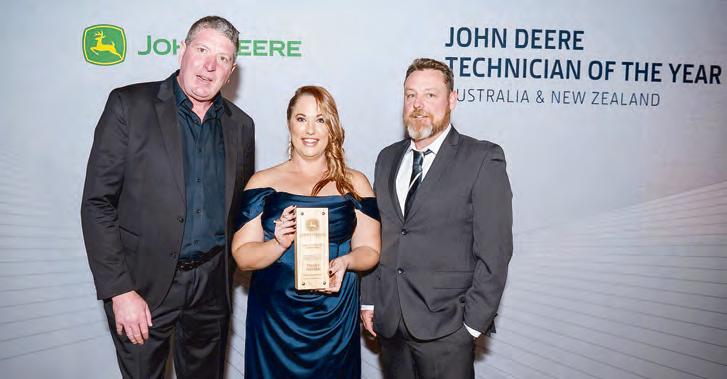
service skills.
Western Australia’s Bradley Skinner was named Australia’s Agriculture and Turf Service Technician of the Year, while Victorians, Kirsten Rush and Andrew Moat, took out the Parts Technician of the Year and Construction and Forestry Service Technician of the Year categories respectively.
Tracy was joined by technician Daniel Barnes taking out the Service Apprentice of the Year Award in bringing award recognition to Queensland.
John Deere Australia and New Zealand managing director Luke Chandler congratulated the Australian winners and acknowledged the value they bring to their local communities.
“Bradley, Kirsten, Andrew, Daniel and Tracy represent the best of the best in customer service, technical proficiency and problemsolving skills, and thoroughly deserve their awards,” Mr Chandler said.
“The best part of my job is the customers and the unique challenges of repairing their parts. I’ve enjoyed getting to know them, understanding their needs and providing them the best service I can.”
Tracy said she was surprised to win her category.
“Win or lose this has been a great experience getting to meet new people and learn new skills, so to take out the title is a bonus,” she said.
While overall headline inflation eased in the latest quarter, the annual rate of food price inflation held fast at 3.3 per cent, the latest quarterly Consumer Price Index (CPI) data, from the Australian Bureau of Statistics, has shown.
The September 2024 quarter data, released today, saw overall annual food price inflation – comparing prices with the September 2023 quarter – remain at the same rate (3.3 per cent) seen in the June quarter.
Quarter on quarter, prices in the ‘food and non-alcoholic beverages’ category rose 0.6 per cent.
RaboResearch senior food retail analyst Michael Harvey said the annual rate of food price inflation was “still higher than average” , with the 10-year average tracking at 2.7 per cent.
Mr Harvey said a spike was seen in annual price inflation for fresh produce overall (both fruit and vegetables), at 8.6 per cent.
However, he said, this needed to be seen in the context of a “weak comparable” in September 2023, when prices were down (-6.4 per cent) on the previous year.
“For the September 2024 quarter though, the ABS (Australian Bureau of Statistics) does cite higher prices for berries, grapes, tomatoes and capsicum contributing to the rate of inflation in this category due to unfavourable growing conditions,” he said.
“However, with the summer season now approaching, we are starting to see good volumes and lower prices in some fruit and vegetable products.”
There was, though some good news for consumers when it came to food prices, Mr Harvey said, with a general moderation in inflation across many key categories – including bread, spreads and condiments – and some “limited price deflation” (lower prices) in categories, including beef and veal and cheese.
“For dairy, there has been promotional activity in the cheese category which has been a driver in some of the lower pricing seen here.
“And it is expected lower retail milk prices we have seen on some supermarket shelves in recent weeks will come through in the December quarter CPI data.
“While butter is not a specific item measured in CPI data, consumers are paying higher prices in this category.
“As a sizeable importer of butter, recordhigh global butter prices are being felt in supermarket shelves here.”
In more bright spots for consumers, Mr Harvey said, annual inflation in the food service category had moderated to 2.9 per cent in the September quarter, compared with the June quarter, where food service prices had in-
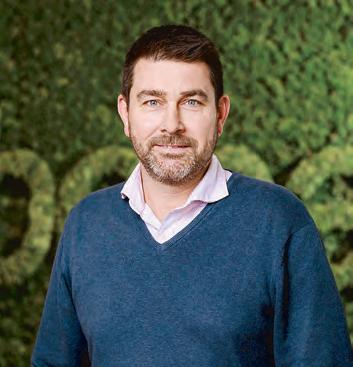
creased 4.2 per cent year on year.
“There were though ‘some problematic categories’ worth noting in the latest CPI data when it came to food prices,“ he said.
“Cooking oils remain a clear ‘red flag’ for consumers with an annual inflation rate of 9.4 per cent.
“While this is a lower rate of inflation than seen in the previous quarter, it follows on from two years of high inflation in this category – on a cumulative basis, quarterly price inflation is running at +42 per cent since March 2022. This reflects the impact of global supply shocks in cooking oil,” he said.
Mr Harvey said there had also been an uptick in the rate of inflation in the snacks and confectionery category – annual price rises of 5.2 per cent in the September quarter compared with 4.6 per cent in the June quarter – as the impact of higher global cocoa prices feeds through.
“The annual inflation rate for egg prices also increased this quarter, to 9.1 per cent compared with an annual rate of 6.5 per cent in the June quarter.
“And with all these categories – cooking oil, snacks and confectionery and eggs – consumers have been seeing prices rise since 2022,” he said.
Overall, Mr Harvey said, the cost of the average food basket for Australian households was “still very high and likely to remain high in the near term”
“Consumers are continuing to respond with their food purchasing choices.
“There is a big focus on promotion and activity to cater to the value-conscious consumer.”
Tracy was one of 130 technicians nominated by their dealerships in 2024, with input from customers, and among the 32 finalist who travelled to the company’s Australian headquarters in Brisbane to be put through a rigorous assessment process, testing diagnostic capabilities, technical knowledge and customer
“The calibre of each of this year’s finalists is a testament to the value we place on providing the best possible service to our customers and communities.
“It’s promising to see the pipeline of talented technicians who will continue to support our customers across the country.
CQUniversity is formalising its growing agricultural research relationship with The University of Mataram in Indonesia, paving the way for future education, research and cultural experiences for both institutions.
The universities earlier this month signed a Memorandum of Understanding, committing to work together on existing and future agricultural research projects, delivering award courses, providing opportunities for students to visit both universities for study tours and exchange programs, as well professional development and consultancy work for academic staff.
Leaders from The University of Mataram (Professor Bambang Hari Kusumo, Professor Sukartono and Professor Dahlanuddin) visited CQUniversity’s Central Queensland Innovation and Research Precinct in Rockhampton to tour the agricultural research facilities and make further connections with CQUniversity researchers and academic staff.
CQUniversity vice-chancellor and president, Professor Nick Klomp said The University of Mataram was an outstanding university in terms of capacity and ethos, and a well-suited institutional colleague.
“Both CQUniversity and The University of Mataram share a strong focus on applied research and innovation, as well as a commitment to community service and social responsibility,” Prof Klomp said.
“Similarly to our own university, The University of Mataram has a strong focus on agriculture, in particular animal production and nutrition, with a dedicated presence of educators and international researchers in this field.
“We believe this shared research focus builds a strong foundation for collaborative research endeavours that will lead to impactful outcomes for the agricultural industry and our global communities.”
The University of Mataram’s Head of the Office of International Affairs Professor Dahlanuddin is a researcher in ruminant nutrition and has a longstanding collaborative relationship with CQUniversity’s Professor Simon Quigley and Assoc Professor Karen Harper, having collaborated on seven projects and 14 publications to date.
Assoc Prof Harper said CQUniversity
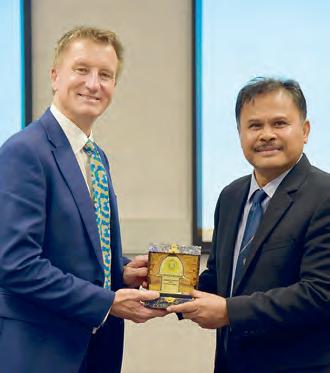
was also organising an undergraduate student trip to The University of Mataram for 10 students in February of 2025 and another proposed study.
“This will be the first time our students have visited Indonesia, providing not only a valuable education exercise, but an amazing cultural experience,” she said.
“The study tour will be funded in part by the New Columbo Plan, which has committed to providing scholarships for 20 CQUniversity undergraduate students to travel to Indonesia over the next 12 months.
“We are very excited and honoured to offer this academic, intercultural and life experience to both CQUniversity and The University of Mataram students.”
Associate Prof Harper said she was excited by the opportunities ahead for CQUniversity researchers and students.
“It is anticipated this collaboration will provide greater access to international projects, increased publications, and enhanced student learning with international tours,” she said.
“It is also anticipated that there will be joint supervision of postgraduate students working on international projects.”
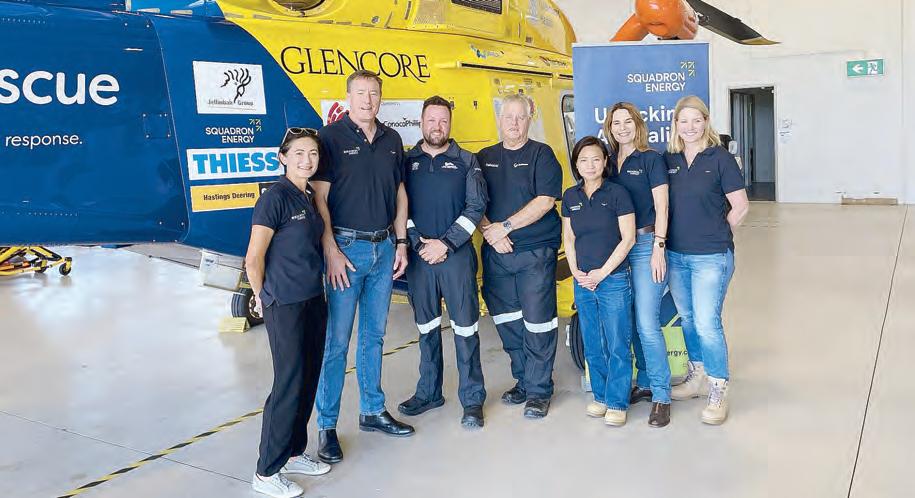
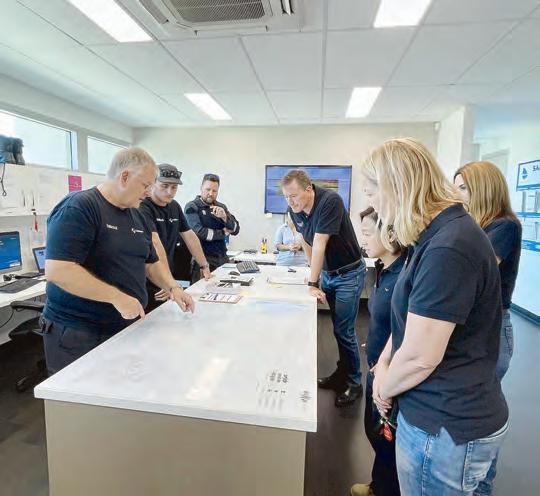
The Capricorn Helicopter Rescue Service (CapRescue) has again received a funding boost from Australia’s leading renewable energy company.
Squadron Energy’s continued support will contribute to the vital service providing essential air ambulance and rescue missions across Central Queensland.
Visiting the CapRescue hangar in Rockhampton on Tuesday, 5 November, Squadron Energy chief executive officer Rob Wheals said his team recognises the critical role CapRescue plays in providing lifesaving emergency services and wants to ensure they have the resources
needed to continue their vital work.
“We are really proud to announce our continued support of the Capricorn Helicopter Rescue Service, especially as we head into a season where their services are more crucial than ever,” Mr Wheals said.
“CapRescue has been a cornerstone of emergency response in the Central Queensland community, offering rapid medical assistance and transport to those in urgent need – including the local community who live nearby our Clarke Creek Wind Farm.
“With the summer season bringing increased outdoor activities and travel, the de-

mand for their services is expected to rise and we’re proud to support such an important service for the Central Queensland community.”
CapRescue’s operations manager Kirsty Wooler welcomed the continued partnership with Squadron Energy.
“We’re incredibly grateful for Squadron Energy’s ongoing support, which truly strengthens our capacity to respond quickly and effectively to emergencies across Central Queensland,” she said.
“This partnership plays an essential role in ensuring that we can continue delivering lifesaving care to our community when it’s needed
most.
“Knowing we have Squadron Energy behind us, especially during this high-demand season, is invaluable to our team and the community.”
In the 2024 financial year, CapRescue completed 1078 flying hours, rescuing 419 people across seven local government shires.
Covering an area of 350,000 square kilometres, CapRescue’s emergency helicopters protect more than 300,000 residents, responding to serious accidents and medical emergencies with world-class aerial search and rescue operations available 24/7.


Henden’s Upholstery & Canvas is a locally owned, family run business that has been providing quality products for over 50 years. They specialise in the manufacturing of custom made:
• Tradesman tool bags
• Document bags
• Safety permit wallets
• Machinery/Instrument covers
• Protective industrial covers
• Ship loader chutes
• Tarps, tonneau covers & shade sails
• Repair & maintenance work and much more
Henden’s specialise in understanding their client’s needs and providing custom solution driven designs. All products are manufactured on site at their workshop.

Phone: 4972 3252
Email: admin@hendens.com.au
Website: hendensindustrialupholstery.com.au
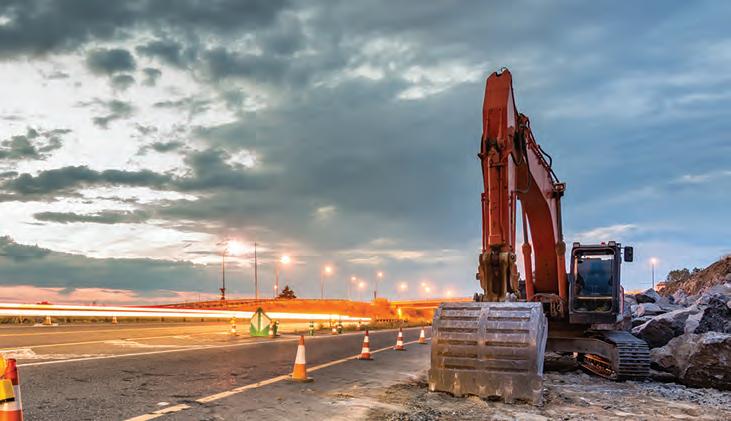
Capral has successfully trialled the recycledcontent billet supplied by Rio Tinto at Boyne Smelters Limited (BSL), using 50 to 100 tonnes of post-production aluminium scrap from its Bremer Park extrusion plant in Southeast Queensland.
The scrap was remelted and cast into billets, resulting in a new product with a minimum of 20 per cent recycled content.
This creates a new era of environmentally conscious local aluminium production.
Capral is exploring options for incorporating this sustainable material into its product offer.
This closed-loop approach not only minimises waste but also reduces carbon intensity of extrusions produced from such billets.
This trial has successfully demonstrated the potential of a Made in Australia closed loop aluminium solution, in line with the Federal Government’s Future Made in Australia policy.
The entire production process has been done entirely in Australia, from raw materials of bauxite and alumina to primary aluminium production, to Capral’s extrusion process, to Rio Tinto’s remelting of scrap into finished recycled billet product.
“Whilst Capral recycles the vast majority of our scrap, it must be sent offshore for processing and typically ends up in different types of products than what we would normally produce,” Capral Industrial Solutions and Supply divisional general manager Luke Hawkins said.
“We are excited to be working with Rio Tinto, our main domestic supplier, on this project; hopefully, in the not-too-distant future, we can recycle all of our scrap locally and use it to support circularity within the Australian aluminium industry.”
By supplying post-production scrap to Rio Tinto, Capral closes the loop, ensuring that
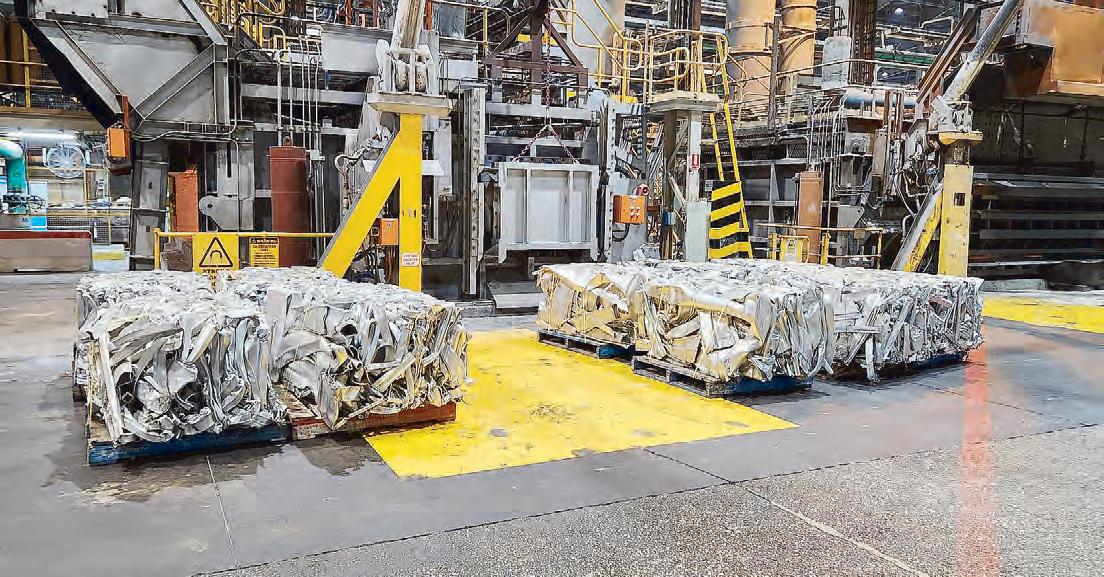
valuable materials remain in circulation in Australia and are converted into useful products.
For Capral, the arrangement provides a strategic avenue to manage its waste stream efficiently while enhancing its sustainability credentials.
“We are driven by the industry to incorporate recycled content into our supply chain,” Mr Hawkins said.




“We’ve worked hard to introduce LocAl and LocAl Super Green, our lower carbon aluminium offer, and the addition of this aluminium material with 20 per cent recycled content is another important step in our evolving procurement strategy towards delivering more sustainable aluminium to Australian manufacturers.”
Blending post-production recycled content with virgin material results in a billet that meets
high-quality standards required by various industries such as construction and transport. This approach demonstrates the viability of closed-loop recycling and challenges traditional notions of production efficiency and resource utilisation.
Capral is Australasia’s only Aluminium Stewardship Initiative (ASI) certified extruder and is committed to procuring and managing aluminium within the Value Chain.





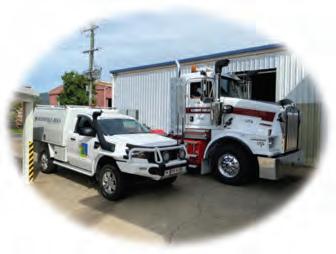
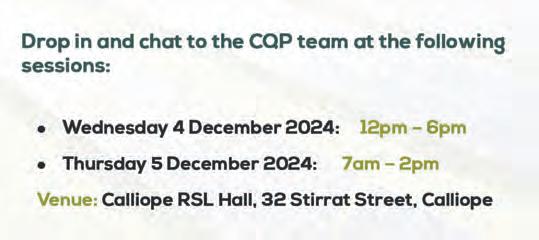
























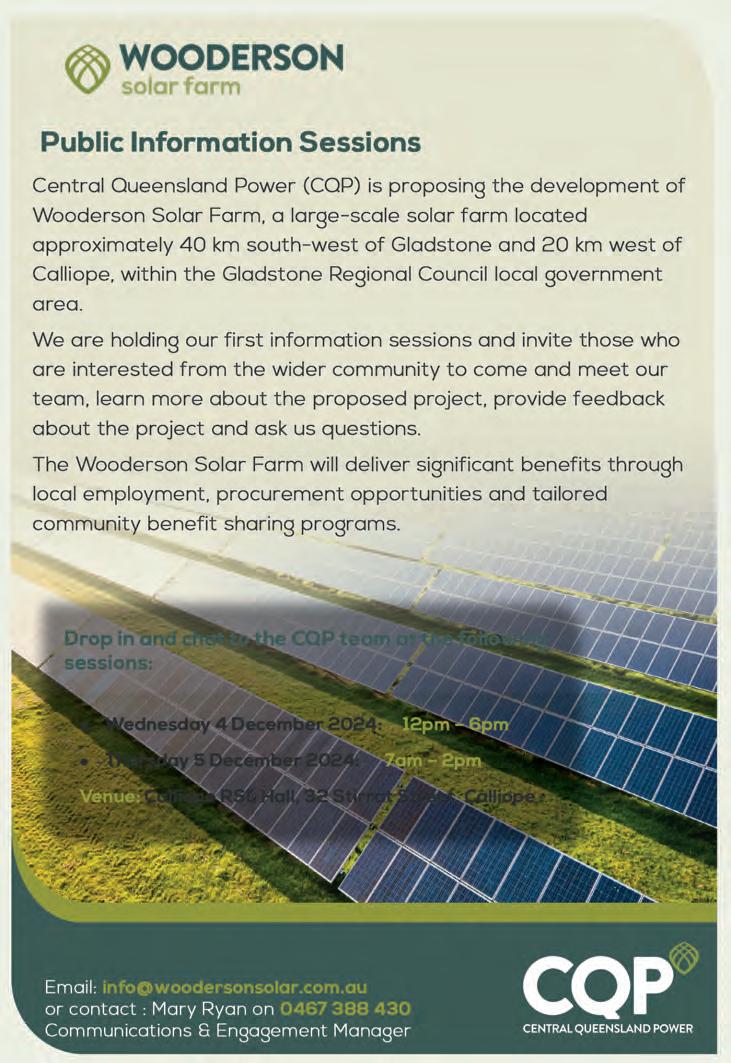
An education festival replaced the bands at Gladstone on Friday, 8 November as more than 80 students from five local high schools gathered at Chanel College to compete in a STEM Big Day Challenge.
The Year 9 students from Chanel College, Gladstone State High School, Calliope State High School, Tannum Sands State High School and Toolooa State High School worked in teams to complete three science, technology, engineering and maths (STEM) activities, each designed to test their problem-solving, teamwork and communication skills.
Tannum Sands SHS took out the overall winning honours on the day.
The challenge was delivered by the Queensland Minerals and Energy Academy (QMEA), the education arm of the Queensland Resources Council (QRC), in partnership ConocoPhillips as the downstream operator of Australia Pacific LNG (APLNG).
QRC Skills, Education and Diversity director Katrina-Lee Jones said the QMEA was excited to be delivering Gladstone’s first STEM Big Day competition and building stronger pathways for students to an industry that significantly contributes to the local area.
“Gladstone is home to three LNG plants and supports many jobs in the region. Our STEM Big Day is an opportunity for students to see the diverse roles that can come from working in the gas industry and pathways to a career,” Ms Jones said.
“The teams worked their way through physics, chemistry and robotic activities.”
The physics activity saw students design of a pulley system and demonstrating its capacity to move heavy loads and the chemistry challenge investigated the materials used in the construction and liquification of gas.
“The final challenge was to create a roaming
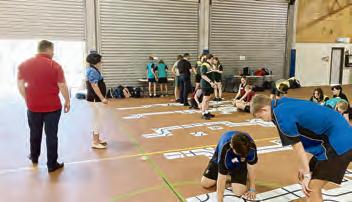
The Year 9 students
in teams to complete three science, technology, engineering and maths (STEM) activities, each designed to test their problem-solving, teamwork and communication skills.

robot and completing an obstacle course simulating an automated drone being operated in an LNG plant,” Ms Jones said.
APLNG ConocoPhillips Stakeholder Relations manager Chantale Lane said they were thrilled to partner with the QMEA to deliver the first STEM Big Day in the region.
“The students impressed us with their scientific skills and their enthusiasm for the challenges,” Ms Lane said.
“The gas industry is a big part of our local community, and it was great to have the opportunity to share our passion for STEM with the students and give them some insights into the many aspects of our operations.”
A personal tour of Batchfire Resources’ Callide mine, 20km north of Biloela, was one of many exciting learning experiences for Year 9 Redeemer Lutheran College (Biloela) students last month.
The students were participating in a new Year 9 trades program developed and delivered by the Queensland Minerals and Energy Academy (QMEA) to extend the popular Year 10 trade workshop program with activities relevant to the younger cohort of students.
Redeemer Lutheran College acting principal Megan Worthington said the new program was a huge success with the Year 9 trade students.
“The Callide mine site tour gave them a genuine insight into the many roles and processes involved in operating a coal mine,” Ms Worthington said.
“It was a unique experience for the students and a great opportunity for them to ask the Batchfire team questions about their careers and qualifications.”
Batchfire Resources ESG and Development general manager Stuart Schmidt said the company was proud to be the largest employer in the Callide Valley.
“Around 85 per cent of our workforce is from the local area, including Biloela, and we trust that today’s tour and workshop has inspired students to join us as apprentices or graduates for a future in resources,” Mr Schmidt said.
The QMEA is the education arm of the Queensland Resources Council (QRC).
QRC Skills, Education and Diversity director Katrina-Lee Jones said it was rewarding to see such a positive response to the new Year 9 program.
“These students are at a great age for ex-

ploring career opportunities in the resources sector as they make decisions about their study pathways,” she said.
“We have seen firsthand the benefits of teaming students and experts to provide real life examples of what it’s like in the field.
“This workshop provides the perfect blend of careers information with trade skills activities and practical tips on applying for apprenticeships.
“Our aim is to inspire the students to continue their studies and consider a trade in the resources sector which will give them great personal, professional and financial rewards.”
For more information about careers in the resources sector visit: shapeyourfuture. com.au
By Gregor Mactaggart
Embattled carrier Rex Airlines has been handed an $80 million lifeline by the Federal Government.
The funds have been delivered to administrator Ernst and Young Australia, which requested an extension of the process until the end of the financial year.
Infrastructure and Transport Minister Catherine King and Workplace Relations Minister Murray Watt confirmed the cash injection would “support the business to continue offering critical services for regional communities”
“(This) announcement is another demonstration of our commitment to maintaining regional aviation access, recognising the important role that Rex plays in regional communities right across Australia,” Ms King said.
“My department continues to meet regularly with the administrators as they work to implement a turnaround strategy for the regional aviation business.
“I encourage passengers to continue to support Rex’s regional operations.”
The funding will keep Rex’s regional routes, including those in Central West (Longreach and Winton) running, during an extension of the voluntary administration process, as well as granting early access to entitlements for former employees of the business.
Rex entered voluntary administration in July, with the regional carrier’s decision to enter the capital city airfare market proving costly.
The Federal Government said the recent sale of Pel-Air Aviation Pty Ltd to Helicorp Pty Ltd, part of Toll Aviation, had provided proceeds to repay secured creditors.
In addition, Rex’s administrators and main secured creditor PAG have advised they will pay the entitlements of former employees of the regional business who have been made redundant during the Voluntary Administration period.
Ernst and Young administrators Samuel Freeman, Justin Walsh and Adam Nikitins of Ernst and Young Australia said the extension

application had been lodged.
“On behalf of the EY and Rex teams, our customers and the communities Rex serves, I’d like to thank Minister King for her strong support for regional Australia,” Mr Freeman said.
“This Australian Government financing facility will enable us to continue to support regional communities through an extension of the voluntary administration.”
Mr Freeman said that the facility and an extension of the voluntary administration would be used to invest in a business improvement program to help secure Rex’s commercial future.
This includes significant investment in the performance of the Rex business including in-
creasing the number of operational aircraft.
“The extension we are requesting will help us to build a strong network for regional Australia, enabling us to continue to operate the regional network while undertaking a business improvement plan to reposition the business for sale,” Mr Freeman said.
“We’re planning to increase the size of the operational fleet, while providing greater clarity for the Rex team and investing in strategic growth initiatives.
“Through this plan, we’re looking to increase reliability and capacity on the regional routes.”
The administrators reinforced their commitment to the regional and remote communi-
ties the Rex regional network connects.
“Importantly, as we’ve demonstrated throughout the voluntary administration – an extension will not disrupt the continued operation of the regional network, which is such a critical part of regional and rural Australia’s connectivity,” Mr Freeman said.
“The actions to be undertaken in the extension period are expected to enhance the network.
“This is all only possible thanks to our dedicated customers, the amazing Rex team members and the support of the Australian Government. We’d like to thank them, as well as our merchants and suppliers who have provided overwhelming support and made this possible.”
Queensland’s Moranbah North mines rescue team has been named overall winner of the 2024 Australian Underground Mines Rescue competition held at Chain Valley Colliery near Newcastle on Thursday, 24 October.
The annual event brings together the top mines rescue teams to demonstrate their expertise and commitment to safety in the mining industry. Four teams from NSW, each having won their respective regional competitions, and four teams from Queensland mining teams (also decided by a series of competitions), competed for the 2024 title.
The MG3 Appin team (Southern Mines Rescue, NSW) was runner-up, followed by Centennial Coal’s Springvale team (Western Mines Rescue, NSW) which took out third place.
Now in its 60th year, the competition features a series of challenging scenarios that replicate real life emergencies faced in mining operations in both underground and surface environments.
Teams were assessed on their technical skills, teamwork and communications as they navigated simulated incidents such as hazard awareness, underground search and rescue, first aid and fire fighting.
The competition not only highlights the critical skills required for emergency response but also fosters camaraderie and teamwork among participants from across the two states.
Queensland Mines Rescue Service general manager - operations, Ray Smith, said the event was important for the Australian underground coal mining industry.

dedication and professionalism of our rescue teams.
“It showcases the extensive training and preparation that goes into ensuring the safety of all workers in the mining industry. We are proud to support these teams and their ongoing commitment to excellence in emergency response.”
Anglo American Australia chief executive officer Dan van der Westhuizen said the Moranbah North Mine mines rescue team had proven time and again it was among the best in the country.
But he said to win the Australian Underground Coal Mines Rescue competition on the back of a fierce international competition in Colombia showed the team’s training was exceptional.
“Mines rescue competitions are an essential opportunity for our industry to ensure we have the right skill sets ready to deploy and save lives across our industry, in the event this becomes necessary,” he said.
“Our highly-skilled mines rescue teams are fundamental to our ongoing commitment to the emergency readiness of Queensland’s coal mining industry.
“The competition is not only a chance for teams to demonstrate and hone their skills but also serves to raise awareness about the importance of safety in mining operations. It brings together the best mines rescue teams from Australian underground coal mines to compete and demonstrate their skills and knowledge.
dustry that gains the most from the experience and learnings gained by team members.”
NSW Mines Rescue general manager, Alaster Wylie congratulated all the teams for their efforts during the day.
“At the end of the day, we celebrate the success of the best team on the day but it’s the in-
“This year’s competition was nothing short of inspiring. The event is a testament to the
“I hope more people feel inspired to join their local rescue teams and gain vital skills. Preparedness is crucial, whether it’s in the workplace or in the wider community.”
The winning team will be invited to represent Australia at the International Mines Rescue Competition which will be held in Zambia in 2026.
More than $200,000 in post-graduate student scholarships is on offer to build on Queensland’s reputation as an international leader in coal mine rehabilitation.
Two scholarships are up for grabs and offer $40,000 a year over three years to postgraduate students studying at a Queensland university through the Coal Minesite Rehabilitation Trust.
The Coal Minesite Rehabilitation Trust was established in 2007 by the Queensland Resources Council (QRC), Queensland Government and industry representatives and give two university students an opportunity to pursue postgraduate studies in world leading environmental management.
QRC chief executive officer Janette Hewson said the scholarships are a practical way
By Karen Simmons
to continue Queensland’s leading expertise in mined land rehabilitation.
“Queensland has an international reputation as a leader in mined land rehabilitation and innovative environmental practices across all of stages of mine development from design to closure,” Ms Hewson said.
“These scholarships will build on the progress already made by industry by contributing to research that will lead to better environmental and community outcomes.
“The industry is continually evolving when it comes to environmental management and rehabilitation methods that will ensure mining is compatible with current and future land uses.
“Each year new students bring innovative research ideas that provide confidence in the
industry’s ability to find new ways for reducing its impact.”
Ms Hewson said the scholarship program benefits the whole resources sector and the broader community making a significant contribution to understanding and implementing sustainable rehabilitation outcomes.
“We are now seeing current and former coal mines transforming to a range of productive post mining land uses including agriculture, renewable energy infrastructure, native ecosystems and community development,” Ms Hewson said.
QRC Environment policy director Dr Leigh Stitz was a Coal Minesite Rehabilitation Scholarship recipient in 2014.
“The scholarship changed my life by allowing me to undertake study in this impor-
tant field and at the same time be a mother to my children,” Dr Stitz said.
“I used the scholarship to research macro invertebrates, or water bugs, in ephemeral streams in Tropical Queensland which are good indicators of waterway health.
“This helped provide a better understanding of the cumulative impacts of mining on waterways to improve rehabilitation practices.”
Applications for the 2024 Coal Minesite Rehabilitation Scholarships are assessed against key priorities that include sustainable post-mining land uses and addressing longterm water management.
More information on the 2025 Coal Minesite Rehabilitation Scholarship positions is available at www.qrc.org.au/applynow
The Gladstone Port Access Road Extension project is still in the planning stages with most of the funding being pushed into the forward estimates by the Federal Labor Government.
The port is surrounded by Gladstone’s city centre and inner suburbs, so managing the ongoing increase in heavy vehicle movements with general traffic is essential to the long-term economic development and liveability of the area.
It was revealed in estimates the previous Queensland Labor Government requested the Australian Government in the 2024/25 budget to change the name of the project and the scope of the funding to focus solely on the bridge over the Calliope River.
As it stands, the project retains an 80:20 split between Federal and State funding, with the allocation breakdown as follows: $12 million (24/25 FY), $12 million (25/26 FY), $12 million (26/27 FY), $24 million (27/28 FY), $24 million (28/29 FY) and $16 million (29/30 FY).
Federal Member for Flynn Colin Boyce said that it was unacceptable that the full $100 mil-
lion committed for the project will not be received until the 2029-2030 financial year.
“Despite $100 million being provided in early 2019 by the previous Coalition Government to upgrade road access to Queensland’s largest multi-commodity port at Gladstone, State and Federal Labor Governments have still not progressed the project other than renaming it,” Mr Boyce said.
“There are four bridges in the Gladstone area that have oversized load and weight restrictions. These bridges need to be repaired and present huge logistical problems for transporting goods to and from the Port of Gladstone.
“It is beyond belief that the Queensland and Federal Labor Governments are more than happy to reap the benefits of the billions of dollars that are exported out of the Port of Gladstone every single year yet can’t invest in the infrastructure that our regional communities need.
“I will be speaking to the new Queensland Minister for Transport and Main Roads about the importance of the project and the need to get works started as soon as possible.”
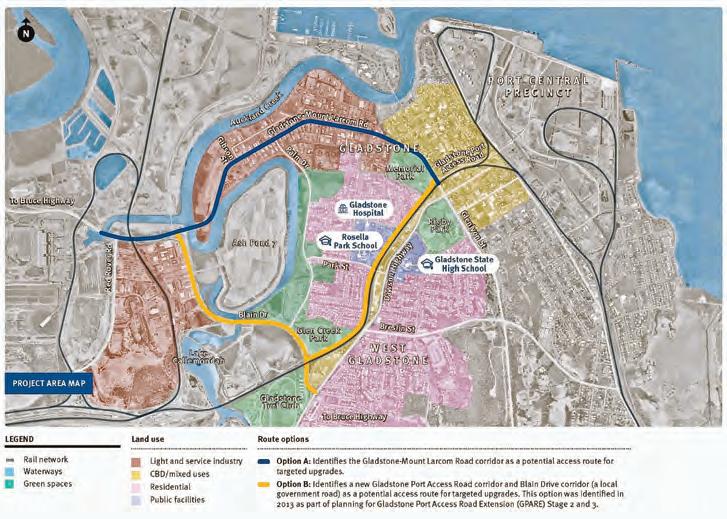


By Federal Treasurer Dr Jim Chalmers
New figures from the ABS show that headline inflation at 2.8 per cent is now the lowest it has been in almost four years.
We are making welcome and encouraging progress in the fight against inflation, but we know Australians are still doing it tough.
We’re coming at this at this inflation challenge from every conceivable and responsible angle and our efforts are making a difference.
Underlying inflation is now at its lowest in almost three years and almost half its peak. Trimmed mean inflation was 3.5 per cent over the year to the September quarter 2024, down from 4.0 per cent over the year to June quarter.
Headline inflation is now back in the RBA’s target band for the first time since 2021.
When we came to office inflation was much higher and rising, now it is lower and falling.
Inflation was 6.1 per cent at the time of the election and is now 2.8 per cent.
Monthly inflation was 2.1 per cent in the year to September 2024, down from 2.7 per cent in August and around a third of the 6.1 per cent at the time of the election.
This is the lowest monthly inflation in more than three years.
Inflation is now much less than half of what we inherited and around a third of its peak. Our policies, including energy rebates, are making a meaningful difference and helping in the fight against inflation but they don’t explain all the moderation in these figures.
Headline inflation was 0.2 per cent in the quarter – the lowest result in more than four years and a less than a tenth of the 2.1 per cent in the quarter just before the last election.
Annual non-tradable inflation recorded its fastest moderation in almost three years.
Non-tradable inflation was 4.1 per cent over the year to the September quarter 2024, down from 5.0 per cent through the year to June quarter.
Services inflation was 4.6 per cent over the year to the September quarter 2024, up from 4.5 per cent over the year to the June quarter.
Australia’s services inflation is lower than many comparable economies including the US and the UK.
The numbers show we are on track and on target for a soft landing in our economy.

We are confident but not complacent about the progress that we are making.
Inflation is back in the band, our back-toback surpluses are helping, and we’re rolling out responsible cost of living relief which is making a difference.
The volatility in global oil prices we’ve seen in recent weeks is a reminder that we’re not immune from what’s going on around the world.
We recognise that there are pressures coming at us from here and abroad, including from higher interest rates and global uncertainty, and that’s why we are doing something about it.
We’ve delivered the first back-to-back surpluses in almost two decades which the RBA Governor Michele Bullock has said are helping
in the fight against inflation.
The data shows that our policies took half of a percentage point off annual inflation in the quarter.
In the year to the September quarter 2024, electricity prices fell 15.8 per cent and would have fallen 2.7 per cent without the energy rebates we are rolling out with the states.
In the year to the September quarter 2024, rents rose 6.7 per cent – without the largest increase to Rent Assistance in 30 years, they would have risen 8.5 per cent.
The data is before the full impact of our second boost to Commonwealth Rent Assistance came into effect.
The Government’s number one priority is getting on top of our inflation challenge with-

out ignoring the risks to growth and providing responsible cost of living relief where we can.
The Covid-19 inquiry underscored the importance of our responsible approach to economic management.
Modelling cited in the report suggested that peak inflation could have been at least two percentage points lower if the policy settings had better matched the public health restrictions.
Inflation has moderated substantially in Australia but unlike many countries around the world we’ve managed to achieve that moderation while also overseeing the creation of a million new jobs, delivering one of the strongest budget positions in the G20, getting real wages growing again, and delivering a tax cut to every taxpayer.




Your mission, if you choose to accept it, is to drive from Longreach to Katherine (then rail to Darwin), via the Gulf of Carpentaria, survey sites for suitable landing strips, then once approved, have them cleared and prepared in time for the first plane to land.
It is 1919, there are no roads, let alone bridges, nor detailed maps.
You are given a Model T Ford, for the 2719km trip, be the first to drive an automobile across the Gulf of Carpentaria and the timeframe is five months.
It does sound like something out of the Mission Impossible files.
However, with only days to spare, a landing strip, along with others, including Katherine, Newcastle Waters, Camooweal, Cloncurry and Longreach, were finished, before the first plane in the inaugural England to Australia air race landed in Darwin.
Charged with the seemingly impossible task was World War 1 ace pilot, Paul McGinness.
He encouraged his war buddy, Hudson Fysh, to join him on this adventure.
An outback adventure, which would lead to the creation of Qantas.
“Conceived in Cloncurry, born in Winton, raised in Longreach” , Sir Hudson Fysh said.
Now, just over a 100 years later, a FrenchCanadian consortium has been surveying suitable landing sites in Australia, for their Flying Whales.
Some 340 kilometres from the Pacific Ocean this consortium has found its first suitable site, also in outback Queensland, Mount Isa.
Their idea has similarities to McGinness’s, air transport must be a lot more efficient for the transit of mail, passengers, health providers, and freight across our vast continent.
Though Flying Whales are thinking bigger, big as in length particularly.
Transporting wind turbine blades, some up to 100 metre long, from port to their onshore, mostly remote, hilly, wind farm site, for one. Presently transported by truck, with the as-

sistance of a steering switch for the rear trailer, the driver (and support crew) faces many challenges, different but like McGinness and Fysh did, on their journey.
Hills, tight corners, narrow roads, one lane bridges, weather conditions, traffic; all adding to the risk and cost of their transporting.
Would not the best alternative be to fly them direct to the site?
Even better, and greener, use air transport that creates no, or little, greenhouse gas emissions and does not require a landing strip, to deliver the cargo.
Enter, the Flying Whale, which looks more like, for those that can remember, the Goodyear blimp (or the Hindenburg), than a whale. But what is a little creative licence to make the name more marketable (and put distance between it and the Hindenburg).
Though there is more work to be done with the design, technology, and testing of the near 200 metre long Flying Whale, a 2028 start in Australia is the target.
There are five other bases in Flying Whale’s Australian plans, plus a manufacturing facility.
What a coup that would be for Central Queensland.
And in a way, a step back to the future.
As Longreach once manufactured Qantas planes, thanks to the skills, knowledge and teachings of Arthur Baird, another key figure in the Qantas origin story.
Congratulations to the Mount Isa City Council on reaching an entrepreneurial agreement with Flying Whales, which is still to be proven as a viable business. Taking a punt on something untested is something not normally in a council’s remit.
It is great to see the entrepreneurial spirit still alive in the outback, as it was back in the 1920s (and beforehand). Spirit which Fergus McMaster, the third founder of Qantas, converted into shares being bought in an idea, an untested business.
While the pros and cons of wind farms will be long discussed, the economic advancement
and liveability of regional and rural Australia can now again look to the sky, not just for hope, but solutions. Instead of giant drones transporting infrastructure, medical equipment, humanitarian aid, it might be helium powered Flying Whales.
Putting whale watching in a new light. It is a pity though we are not talking about an Australian consortium behind the idea.
But then, Qantas started with British made planes. What spark would Paul McGinness add, if he was alive, and knowing whales can now fly? The sky is the limit.
P.S. When Flying Whales name their first Australian manufactured aircraft, I hope they consider Paul McGinness as its name. Arguably the forgotten founder of Qantas, and at one time its biggest shareholder, a war hero, visionary; who died, without fanfare, aged only 58, physically (thought to had post-traumatic stress disorder) and financially broken.
“McGinness is the one who supplied the first spark then the others came along” , Sir Hudson



The job market in Central Queensland (CQ) continues to experience consistent growth, driven by ongoing infrastructure developments, the rise of renewable energy projects, and a concerted effort from local councils to address critical workforce needs.
With regional events and milestones shaping recent months, there has been a noticeable shift in how industries and local stakeholders are approaching employment challenges and opportunities.
According to the latest Australian Bureau of Statistics (ABS) data, Queensland’s unemployment rate stood at 4.2 per cent in August 2024.
While the data for September is yet to be released, the state unemployment figure has remained fairly steady over the last 12 months.
Central Queensland remains a key contributor to the state’s economy, with job vacancies seeing a growth rate of 2.2 per cent in the past quarter, particularly in sectors like construction, renewables, and hospitality.
The Careers for Net Zero Queensland Roadshow recently held in Gladstone further highlighted the region’s efforts to address the skills gap by promoting opportunities in renewable energy and net zero projects.

This initiative plays a vital role in positioning Central Queensland as a future leader in clean energy, with demand for skilled workers set to increase as projects like the proposed wind farm
forward.
BOOST IN RENEWABLES: JOBS AND TRAINING
One of the most significant recent developments is Queensland’s unveiling of a $15 million renewable energy training facility, to be based in Rockhampton.
The state government is pushing for workforce readiness in sectors such as hydrogen production, solar, and wind energy.
With a focus on green technologies, this new

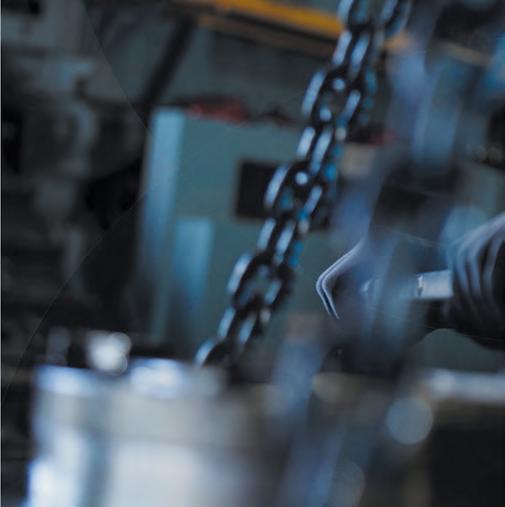
facility will play a pivotal role in training workers for upcoming renewable energy projects in Central Queensland, including large-scale wind farms that are set to create hundreds of new jobs.
LOCAL COUNCILS ADVOCATE FOR HOUSING AND JOBS
Central Queensland’s housing market and infrastructure also play a crucial role in supporting the workforce.
During a recent trip to Brisbane, the Central

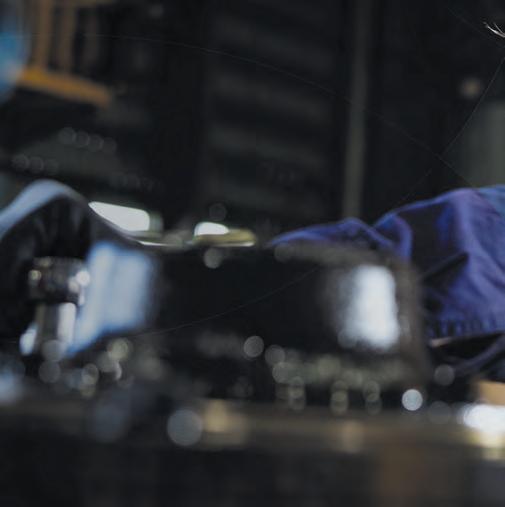
Queensland Regional Organisation of Councils (CQROC) advocated for critical reforms related to housing affordability and job creation.
With regional populations increasing, ensuring adequate housing and infrastructure has become a priority, particularly for key sectors such as construction and renewable energy.
CQROC’s focus on affordable housing and job creation is particularly timely as the region faces ongoing pressure from population growth.
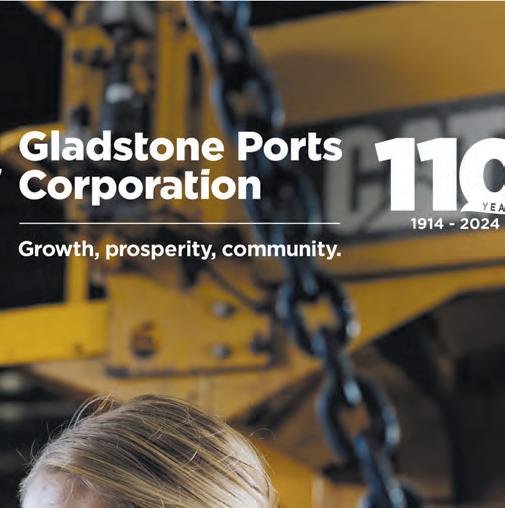


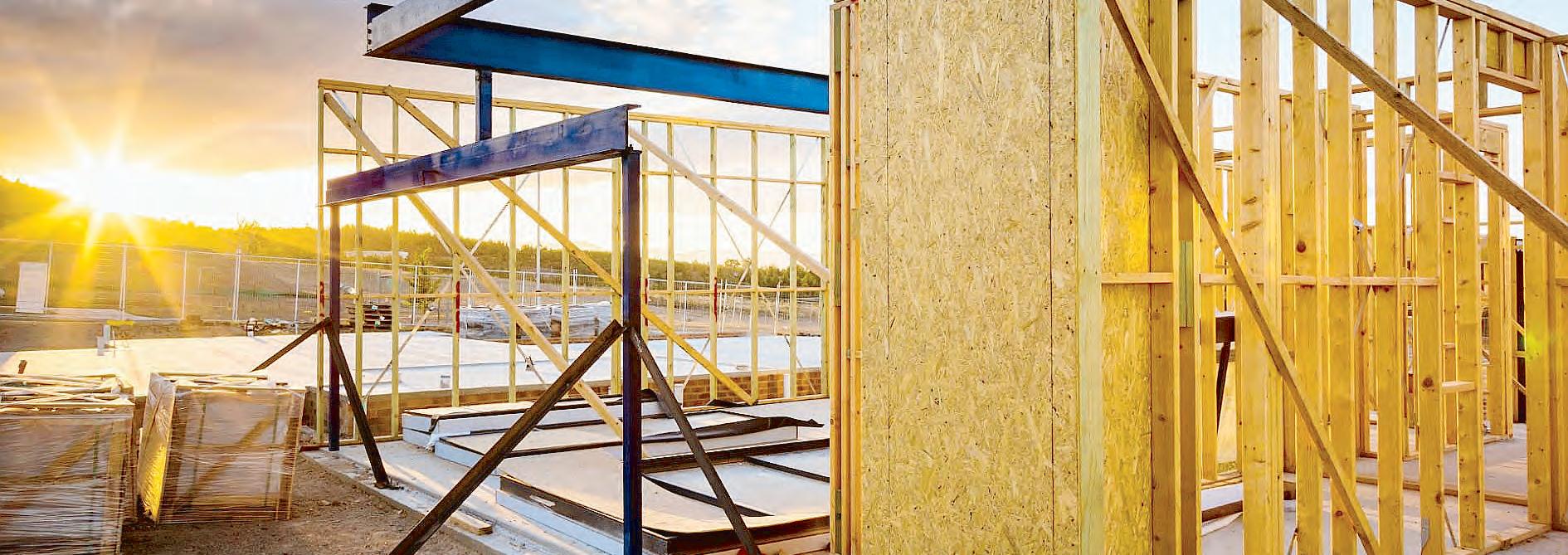
This initiative emphasises that without sufficient infrastructure, including housing, the economic potential tied to these emerging industries may be hindered.
LOCAL NETWORKING AND BUSINESS GROWTH
The Gladstone Chamber of Commerce and Industry (GCCI) plays an important role in recognising the region’s entrepreneurial spirit and last month announced the finalists for their Best in Business awards.
The awards, which celebrate local innovation and business growth, spotlight how Central Queensland continues to foster a thriving small business community.
These businesses not only provide essential goods and services but are also vital job creators in the region.
Furthermore, the LinkedIn Local Gladstone
fifth birthday event brought together professionals across various industries to network and discuss emerging trends in the local economy and business environment.
These bi-monthly events foster relationships that help individuals and businesses thrive, with many participants citing the LinkedIn Local event as an excellent way to learn about local opportunities and career development in a rapidly changing market.
RENEWABLE ENERGY: A KEY DRIVER OF EMPLOYMENT
As the global push for sustainability gains momentum, Central Queensland is positioning itself at the forefront of Australia’s renewable energy revolution.
Projects such as the government’s investment in training facilities will be crucial in driving job creation over the next decade.
The local commitment to renewable energy projects is already bearing fruit, with jobs in sectors like solar and wind energy becoming increasingly accessible to locals.
This shift is a significant win for Central Queensland, ensuring that the region remains competitive and attractive to both employers and skilled workers.
ADDRESSING CHALLENGES AND MOVING FORWARD
Despite the positive trajectory, Central Queensland faces its fair share of challenges.
The growing demand for affordable housing and infrastructure remains an issue, particularly in areas where large-scale projects are ramping up.
The ongoing efforts of local councils, as seen in CQROC’s advocacy, aim to alleviate some of these pressures by seeking federal support for
affordable housing solutions.
Ensuring that the region can accommodate its growing workforce will be critical to maintaining its economic growth.
The employment landscape in Central Queensland is one of transformation.
With emerging industries and a strong focus on skills development, the region is poised for continued growth.
However, collaboration between local governments, businesses, and the workforce is essential to ensure the long-term sustainability of this growth.
Central Queensland has an exciting future ahead, with opportunities across multiple sectors set to define the region’s next chapter.
Jobs in Central Queensland offer a holistic approach to your recruitment and talent attraction requirements.
